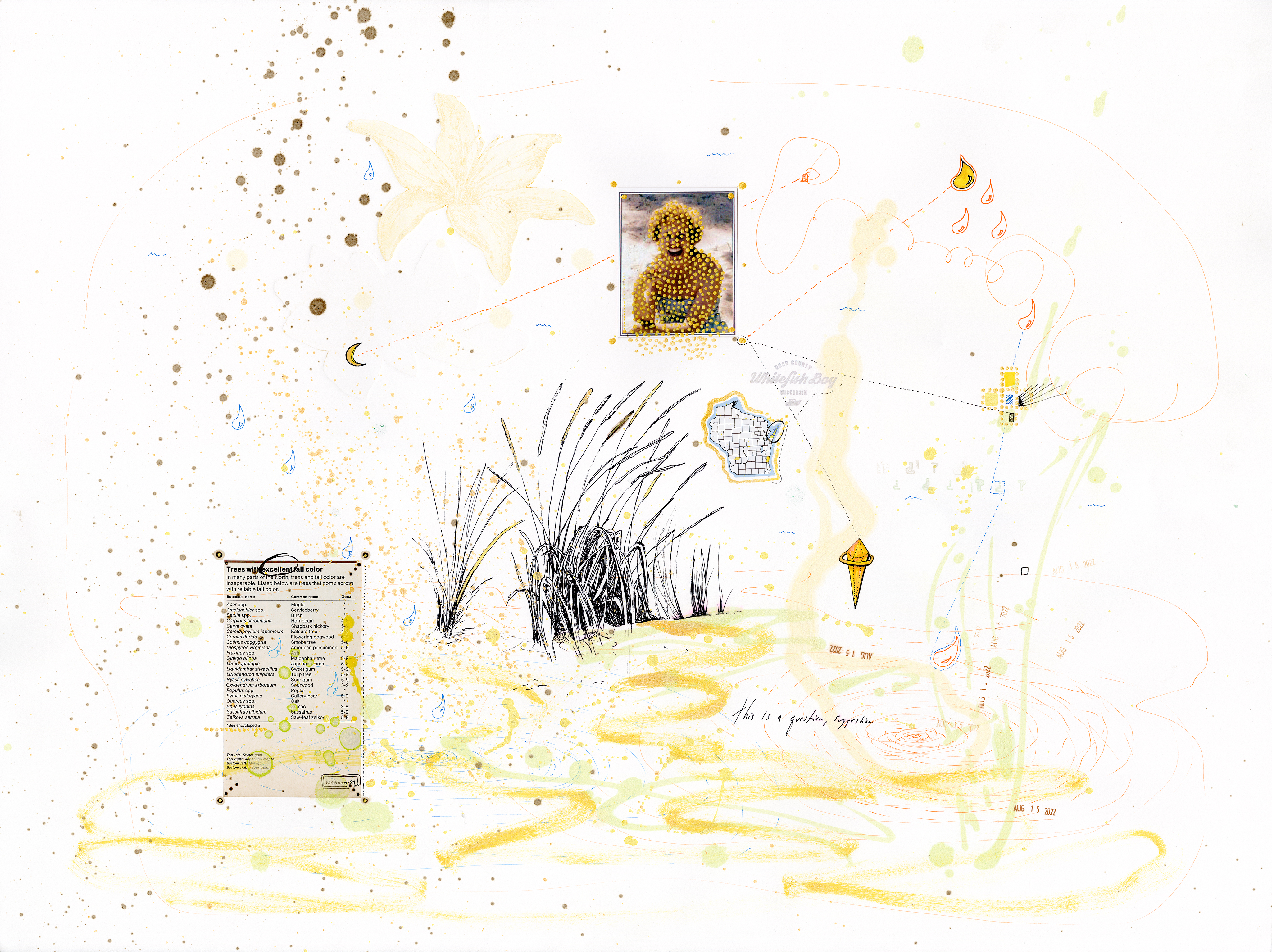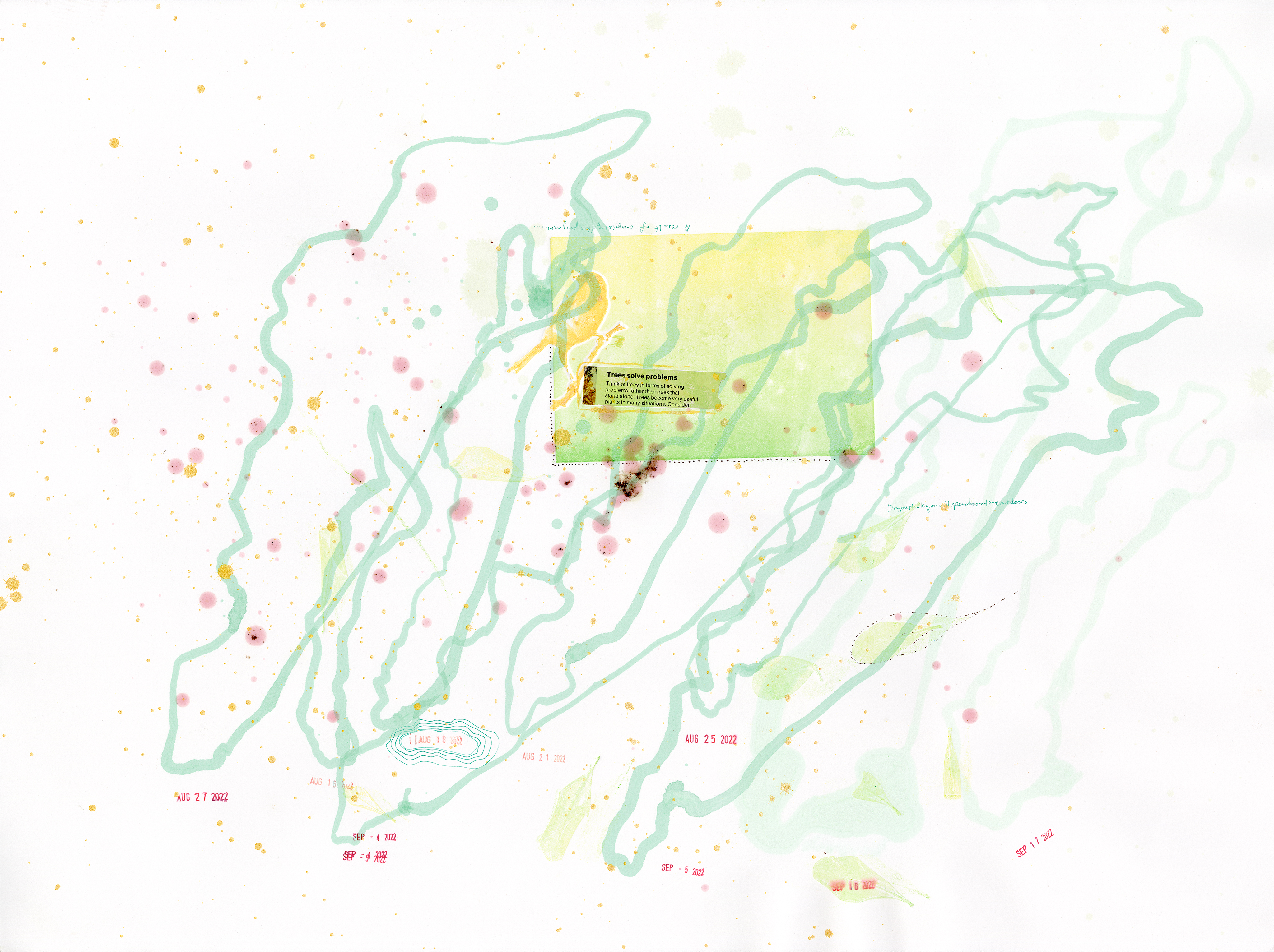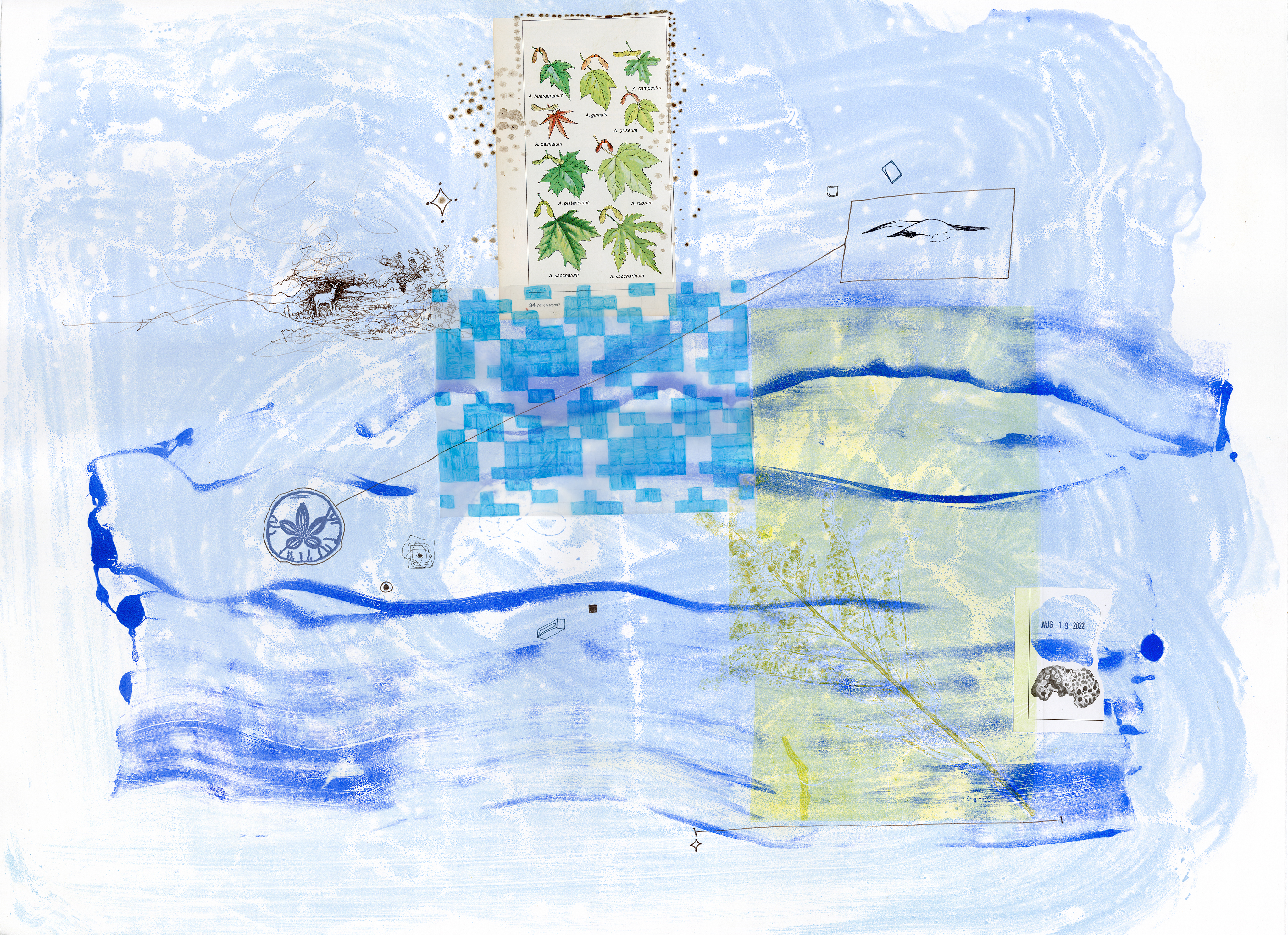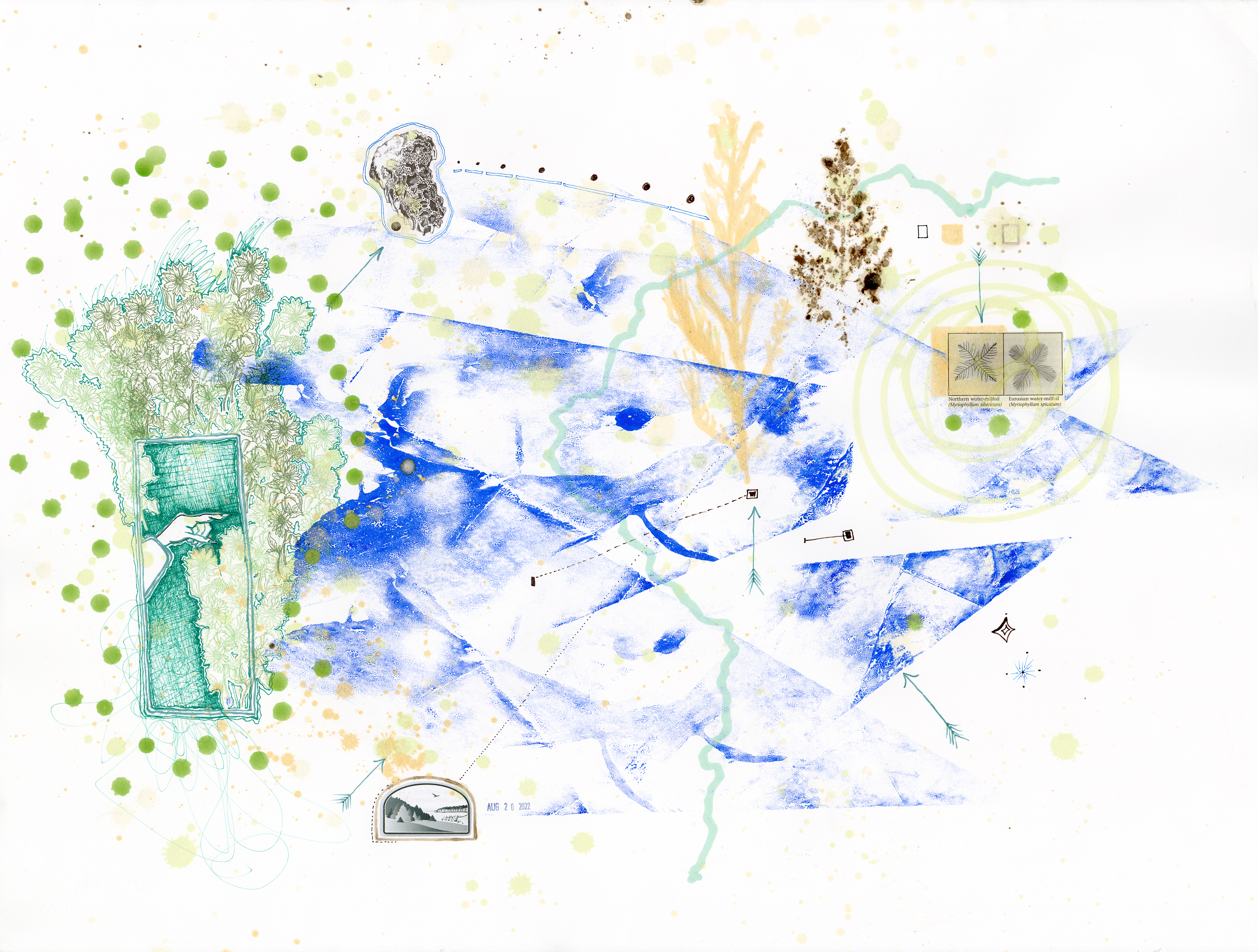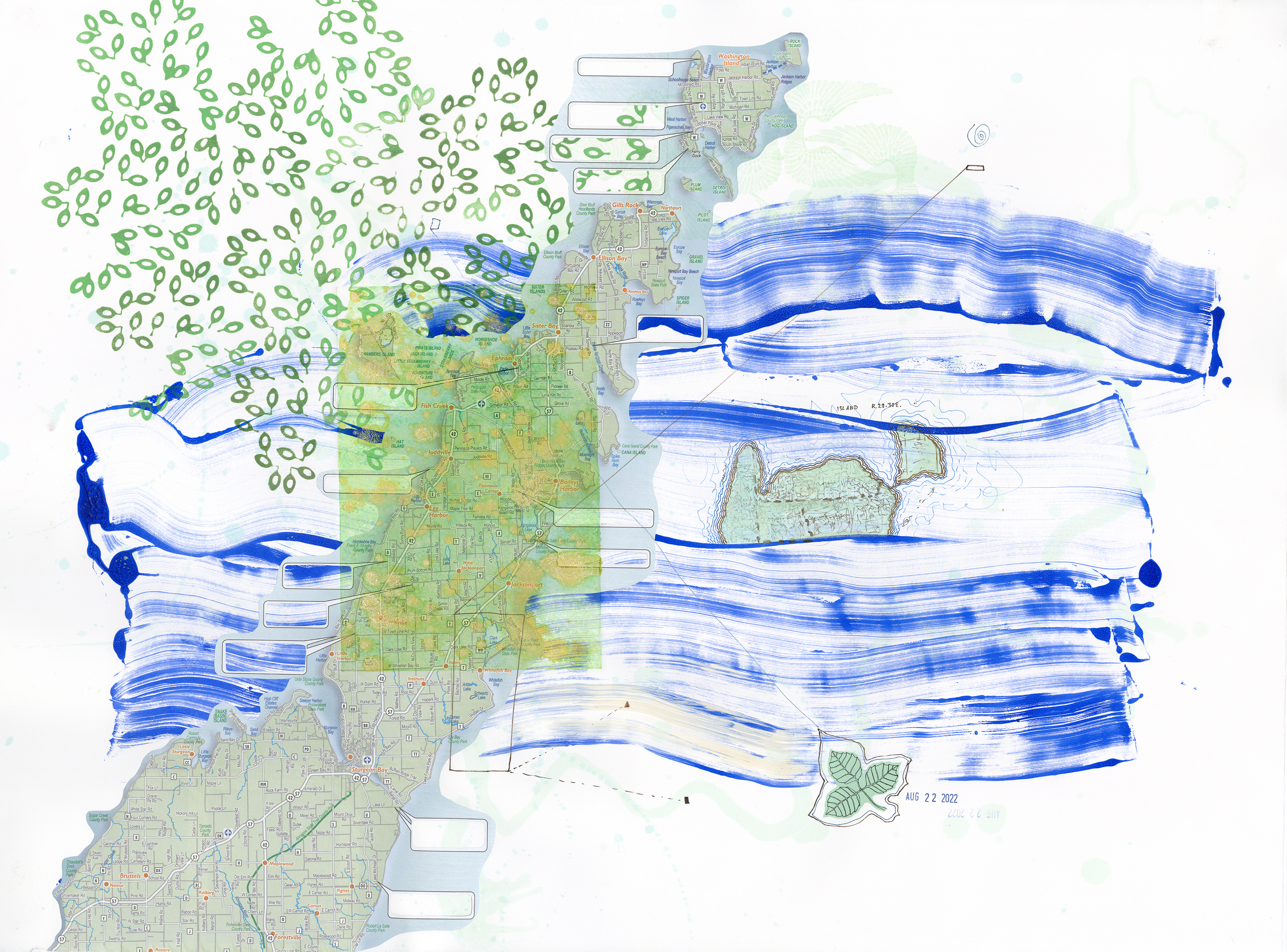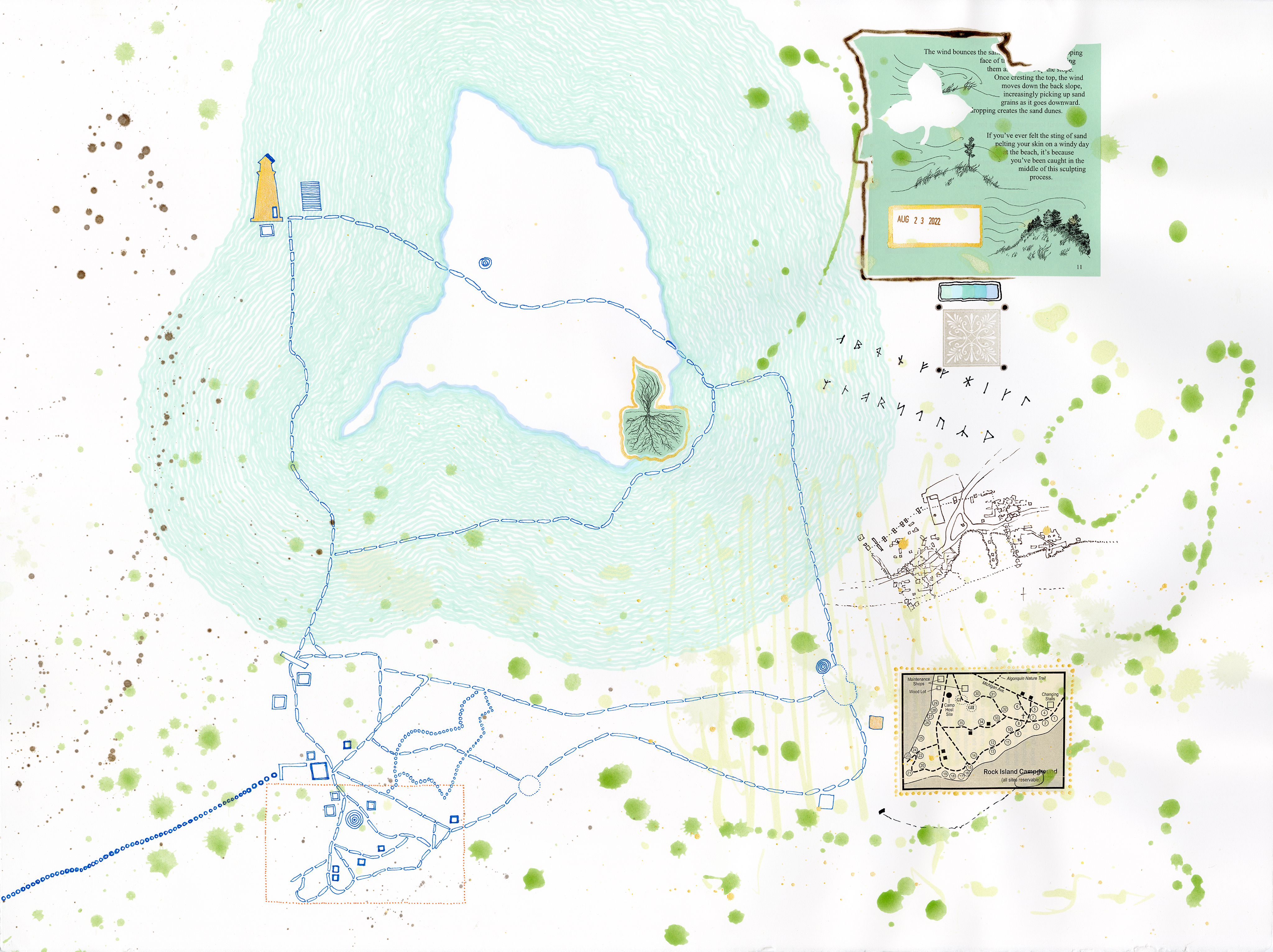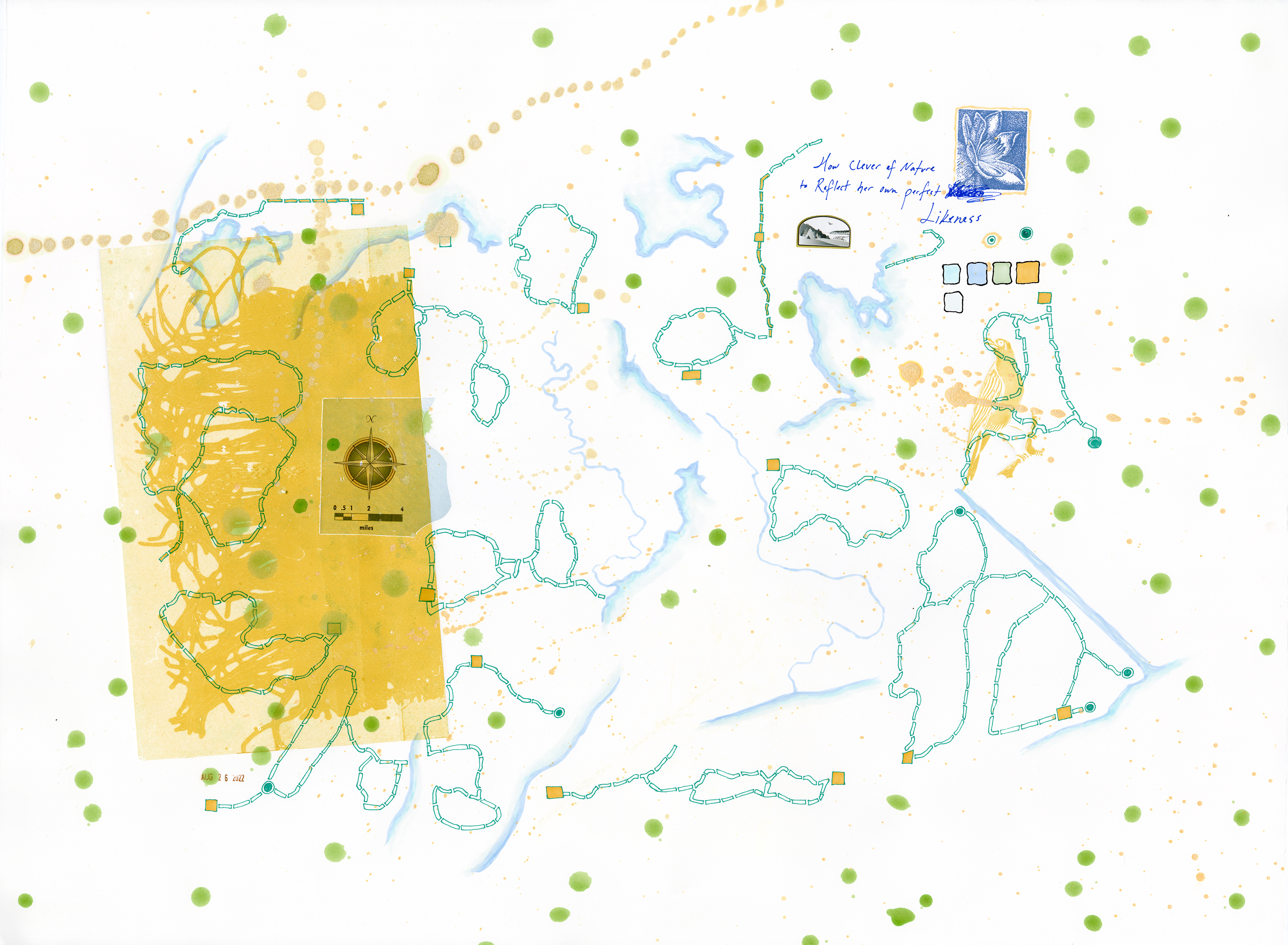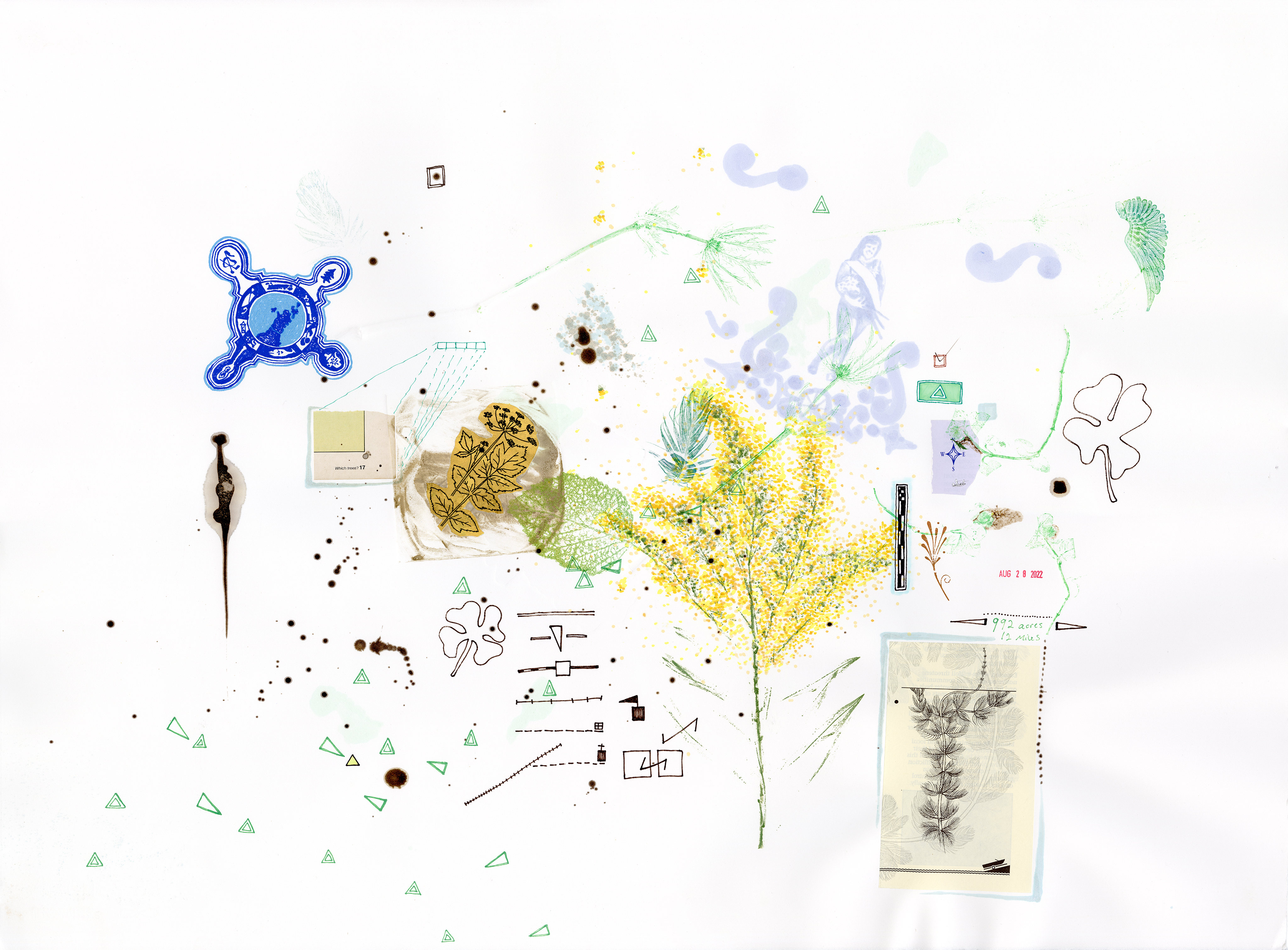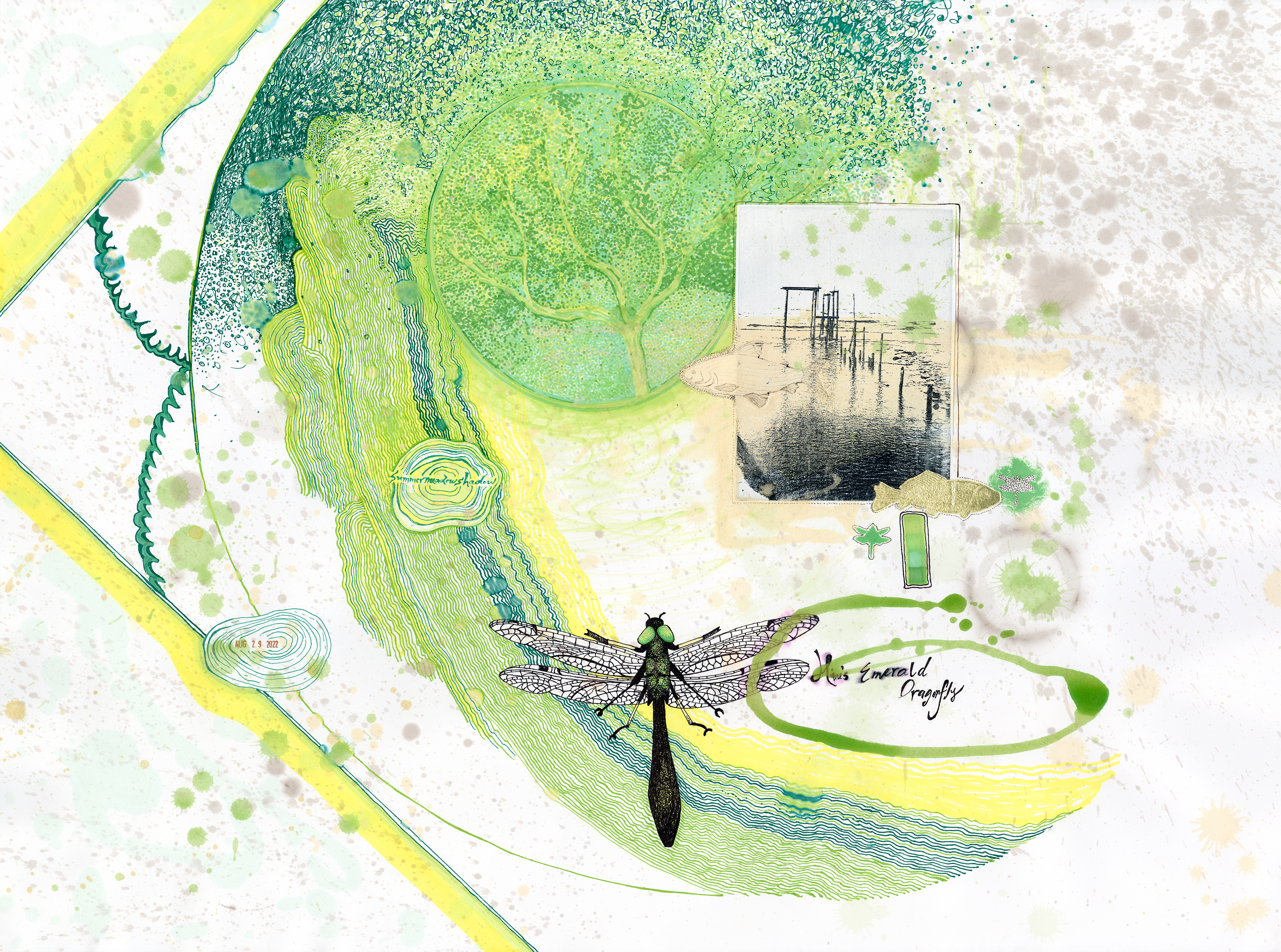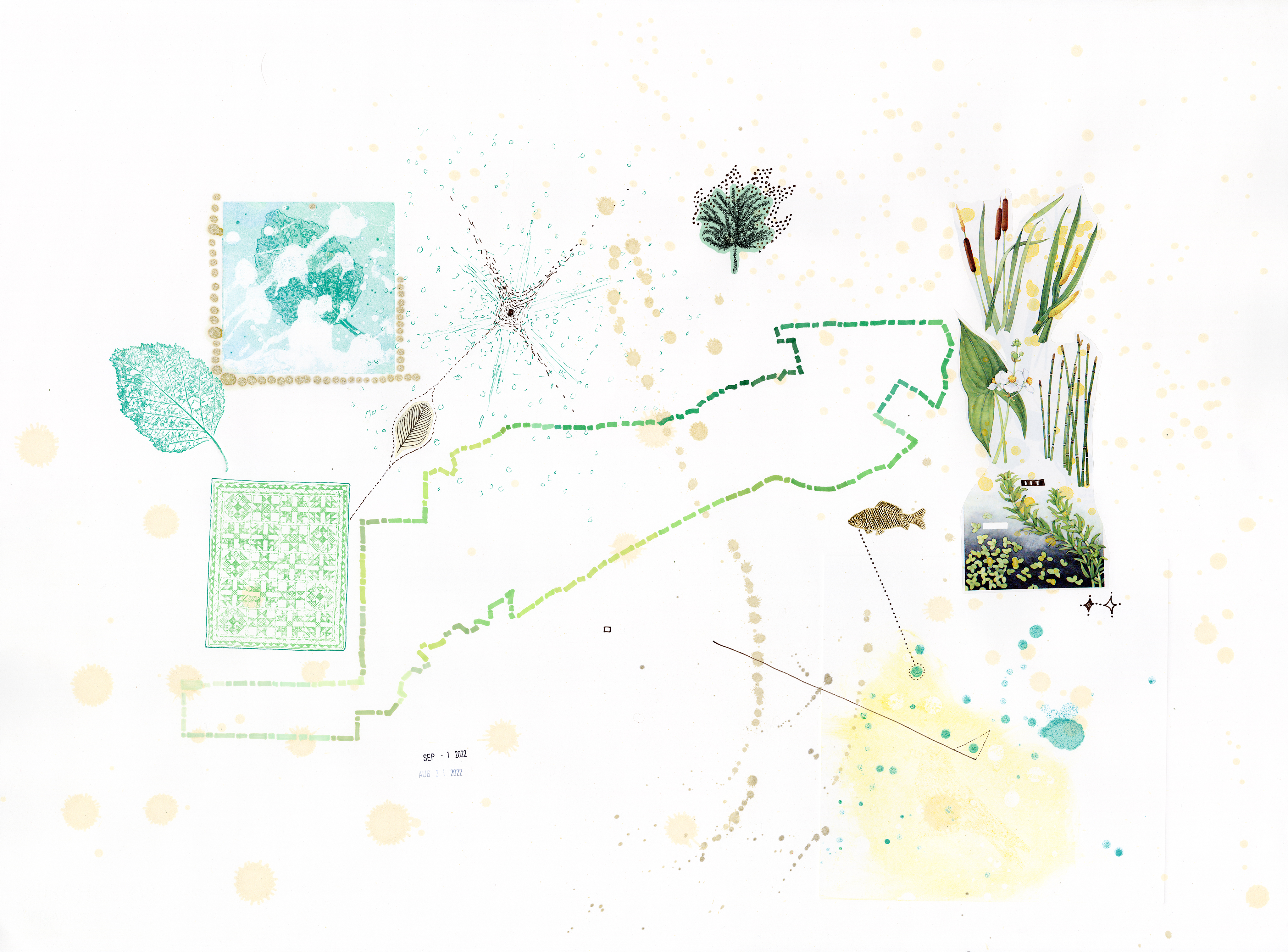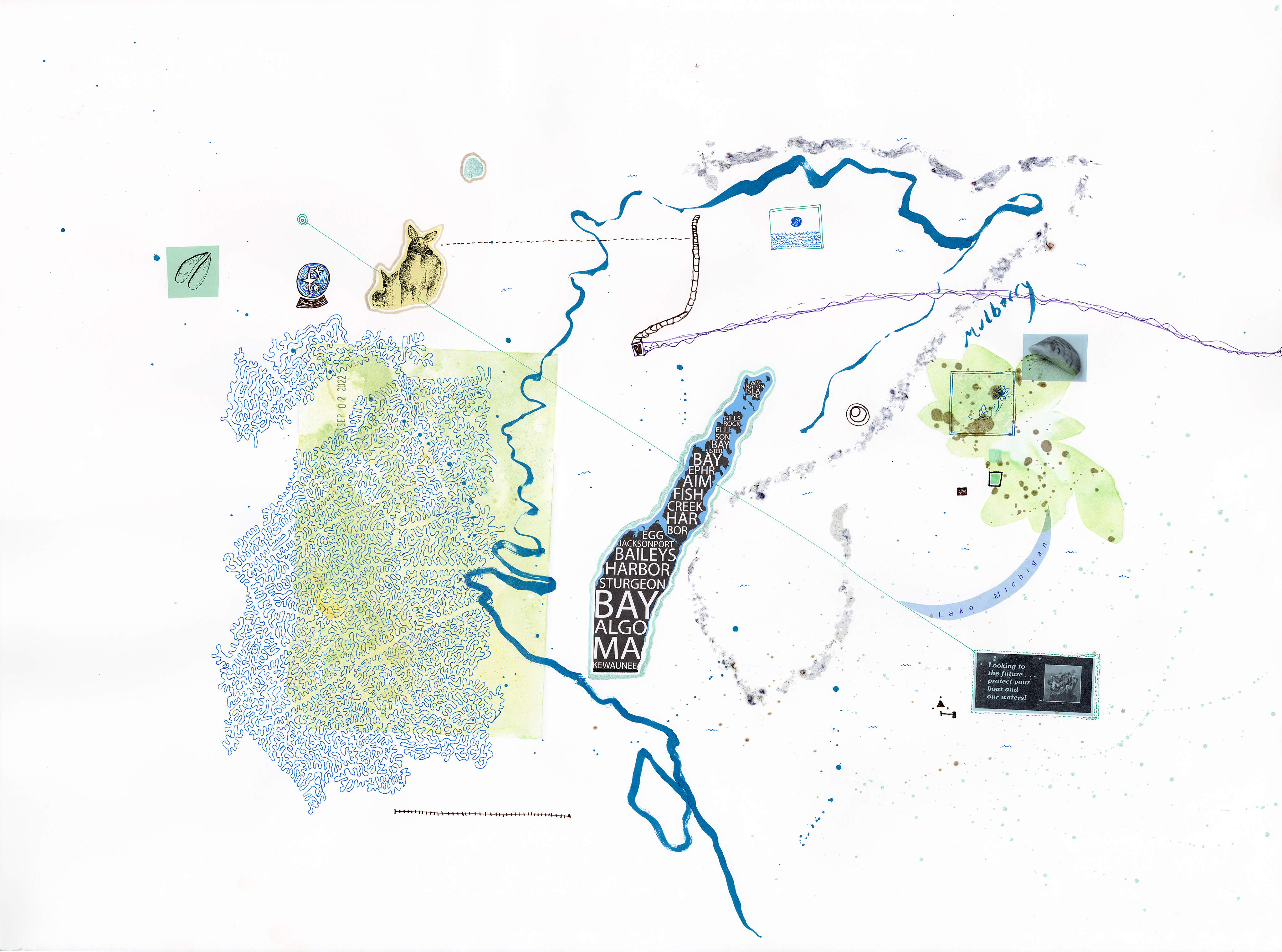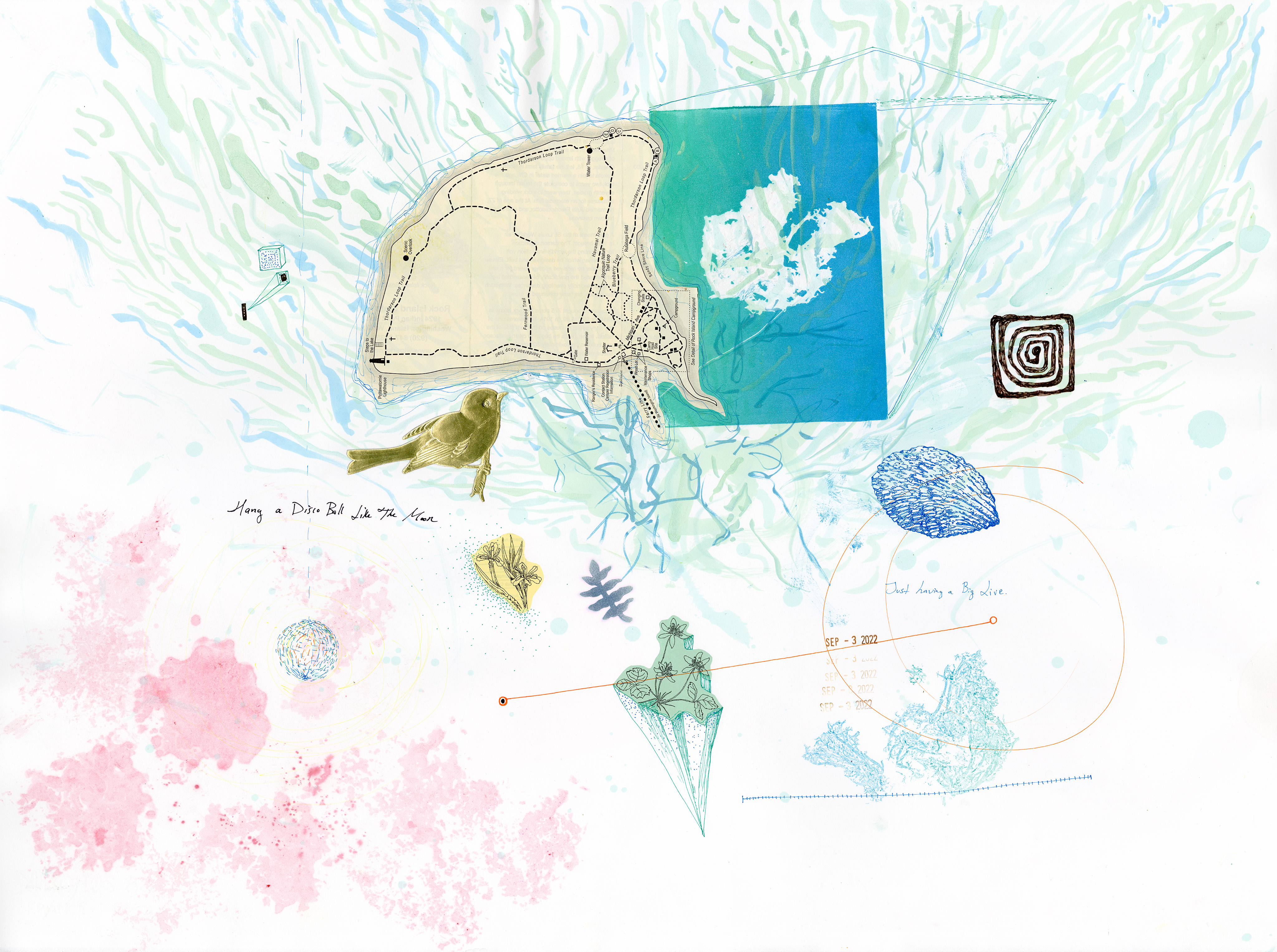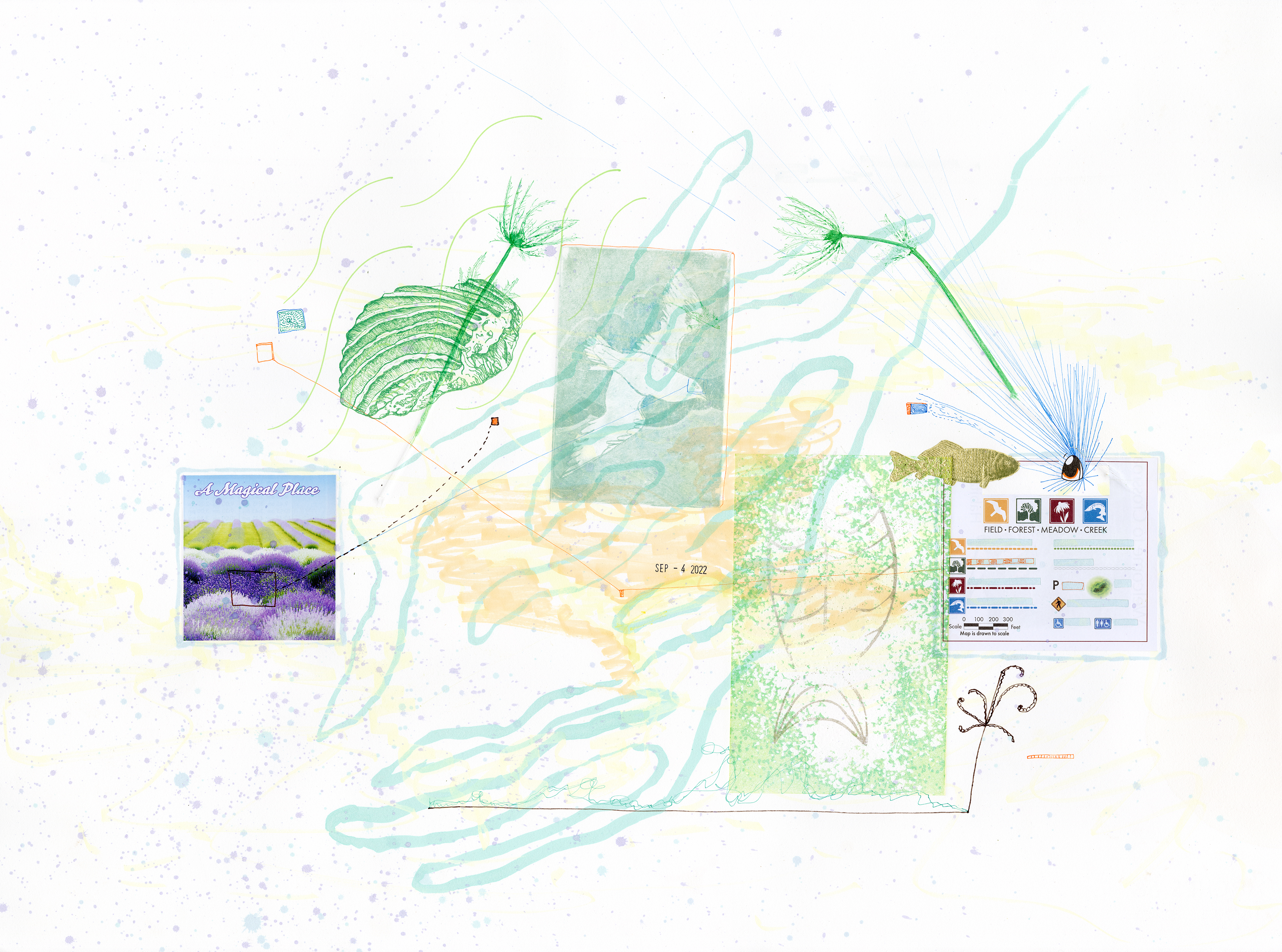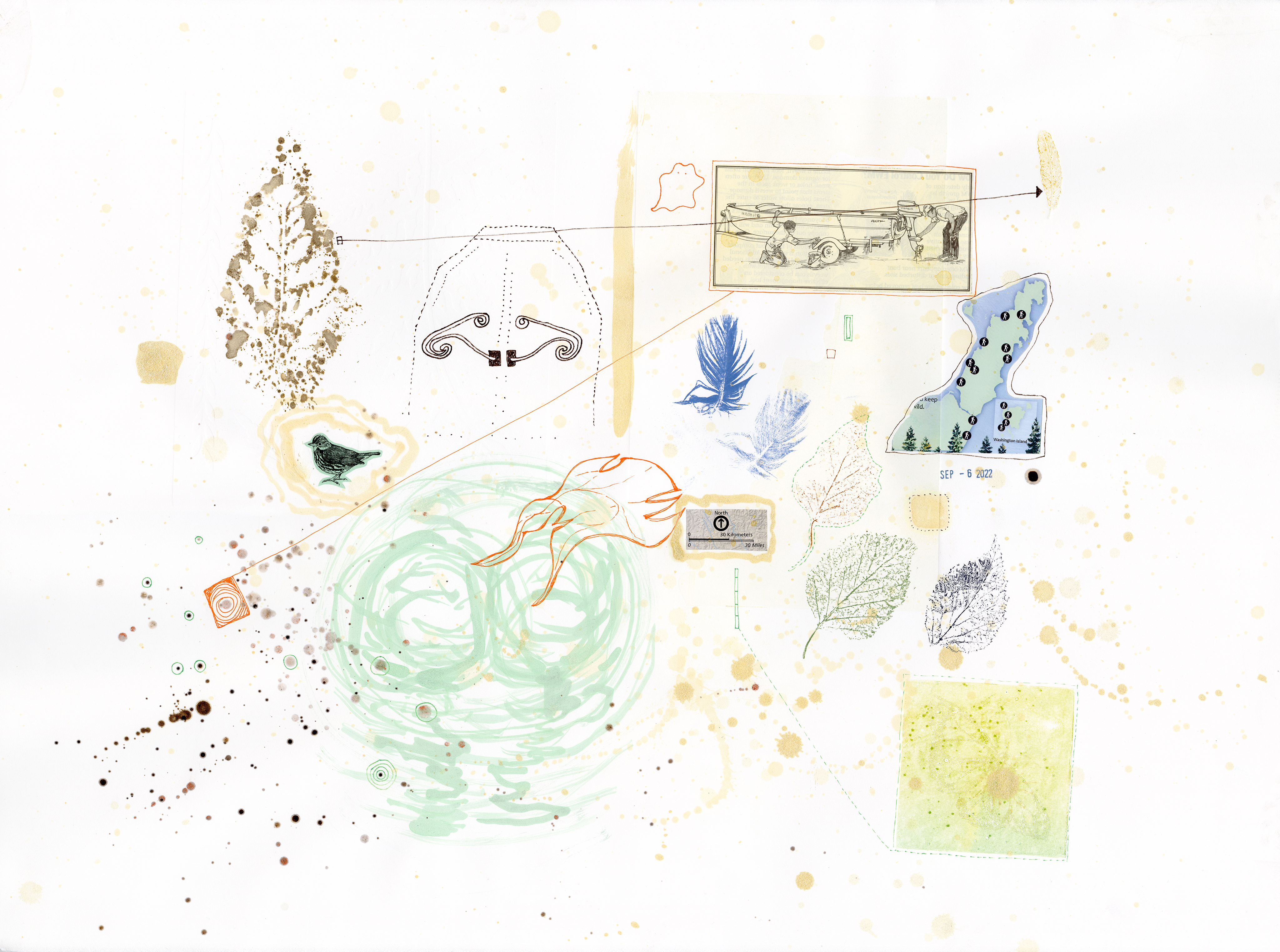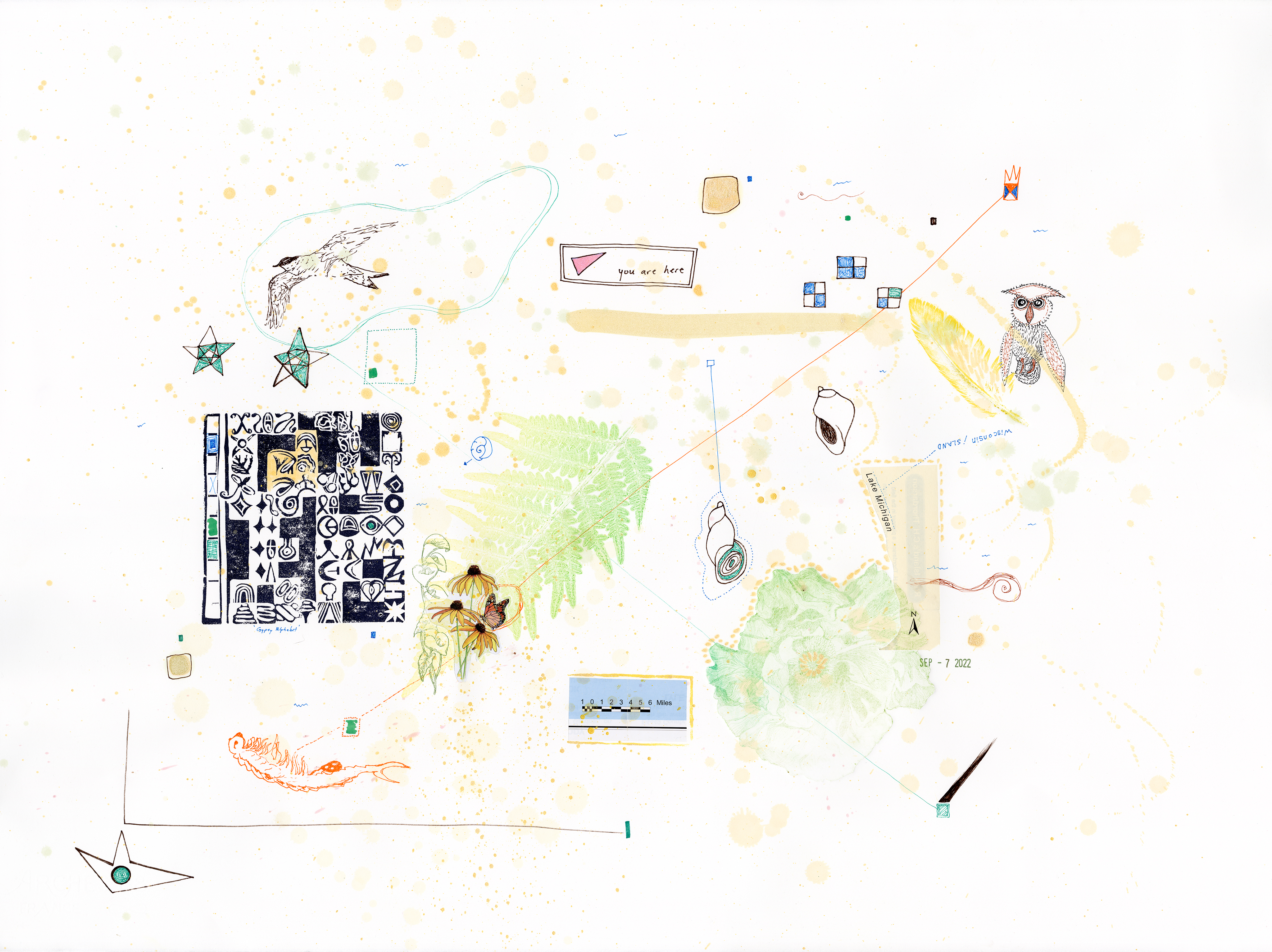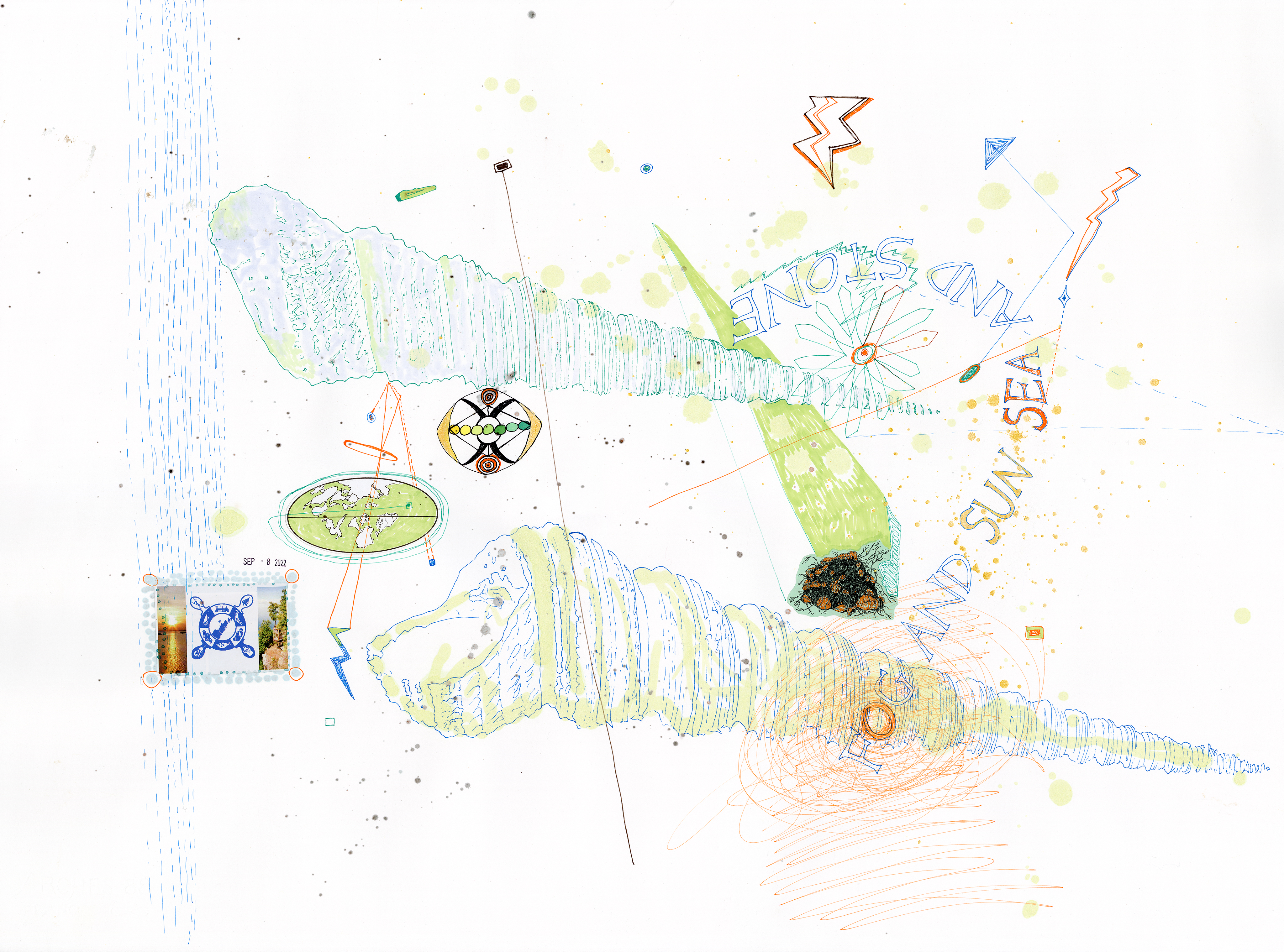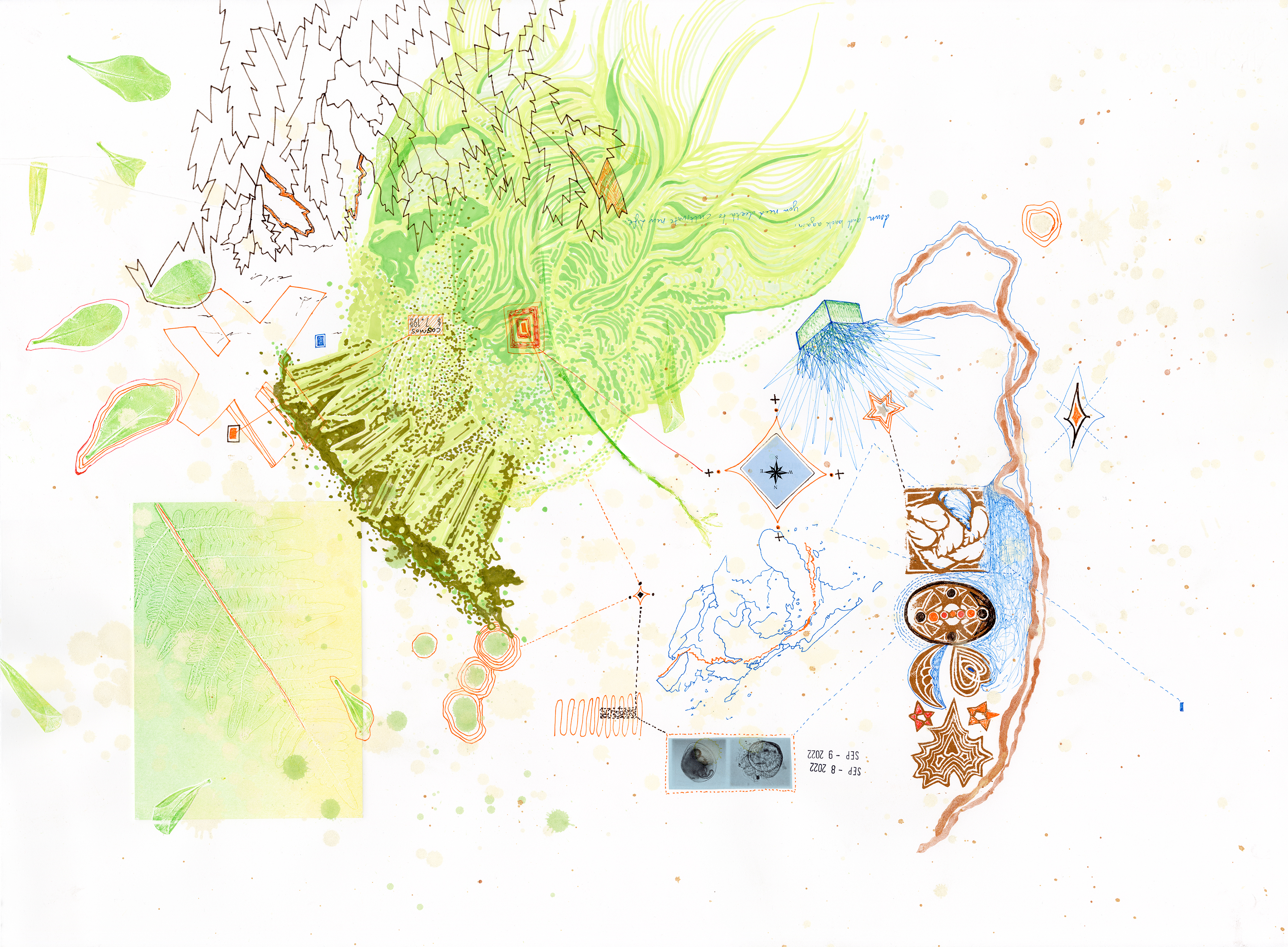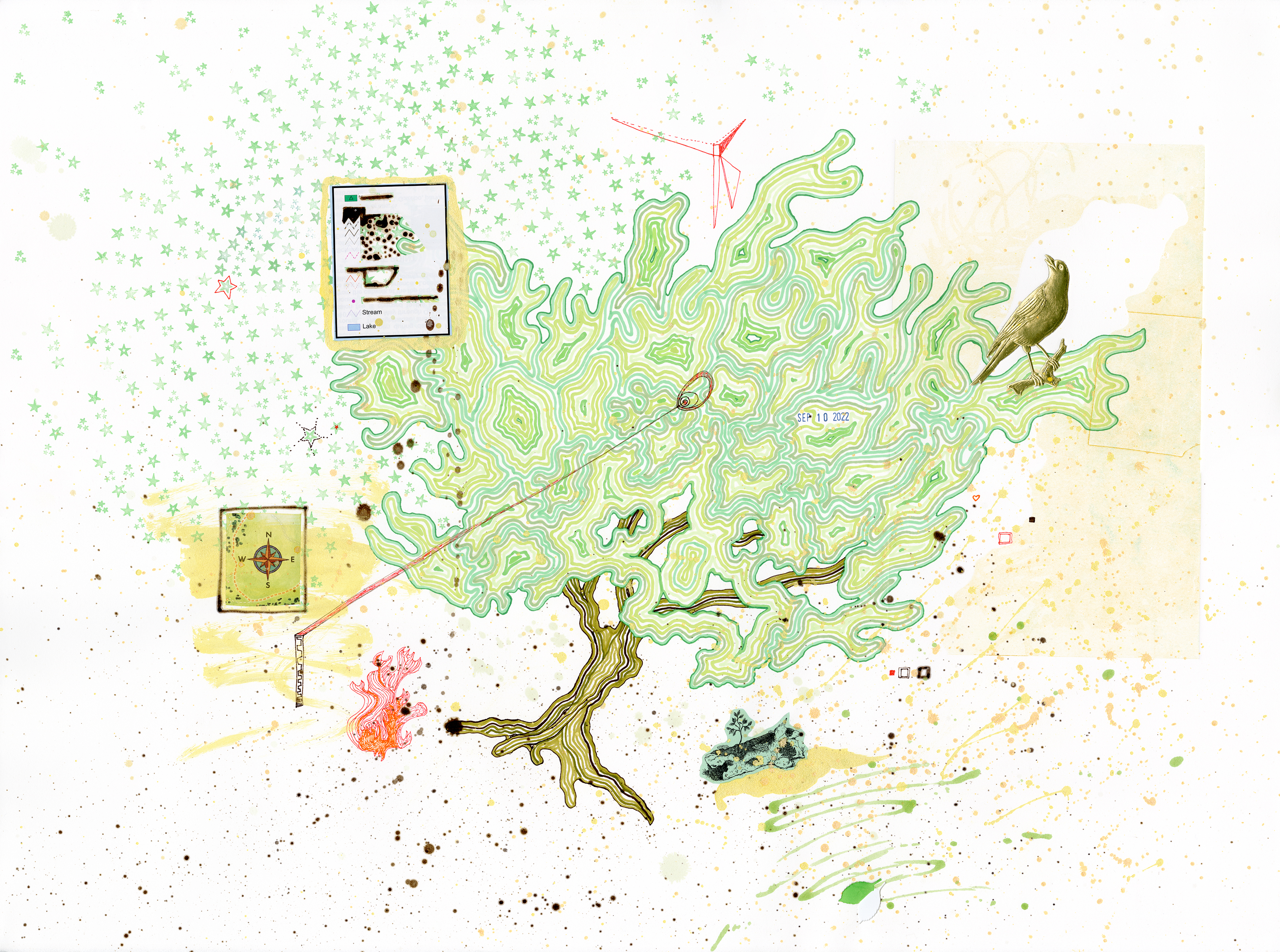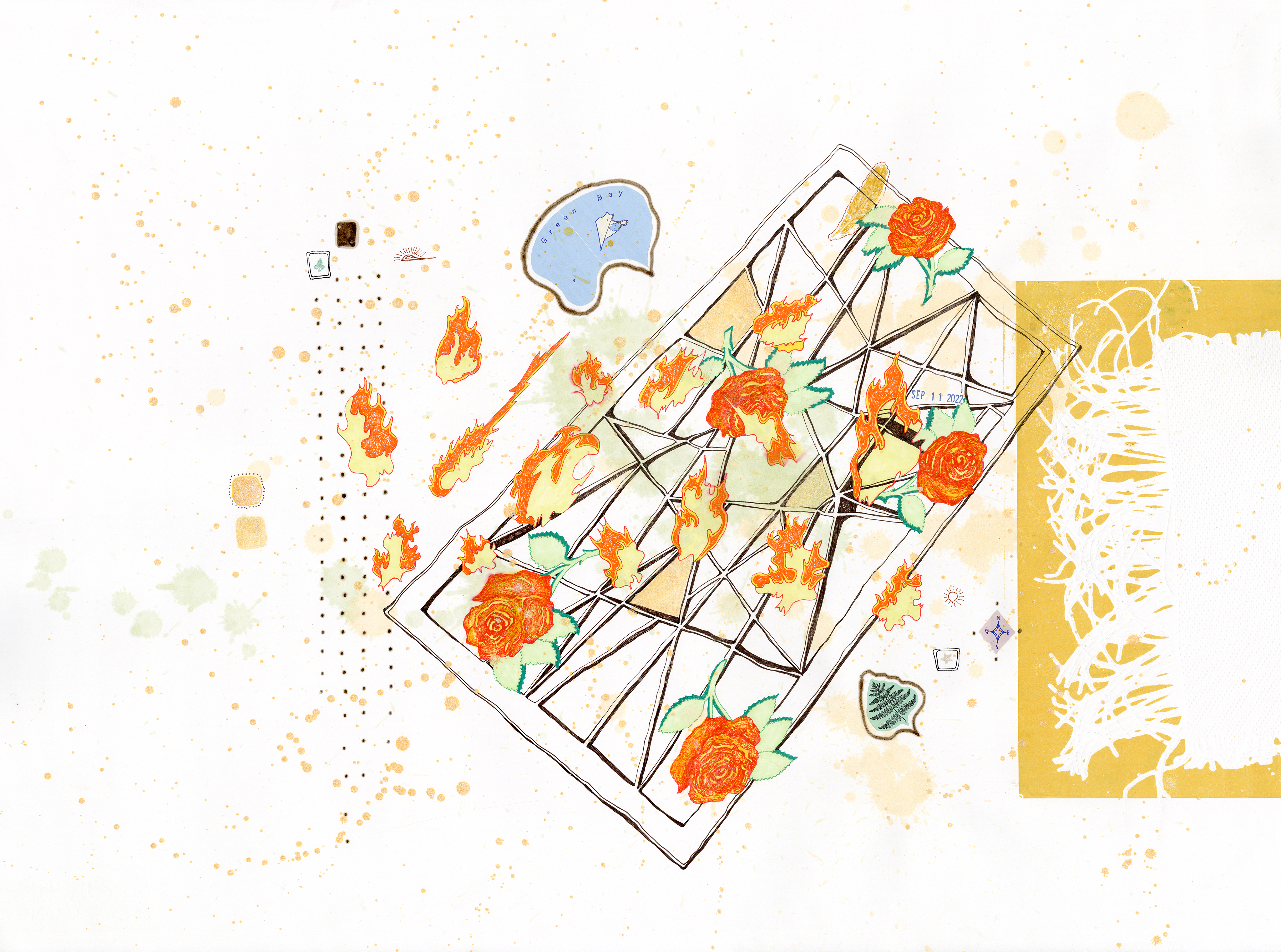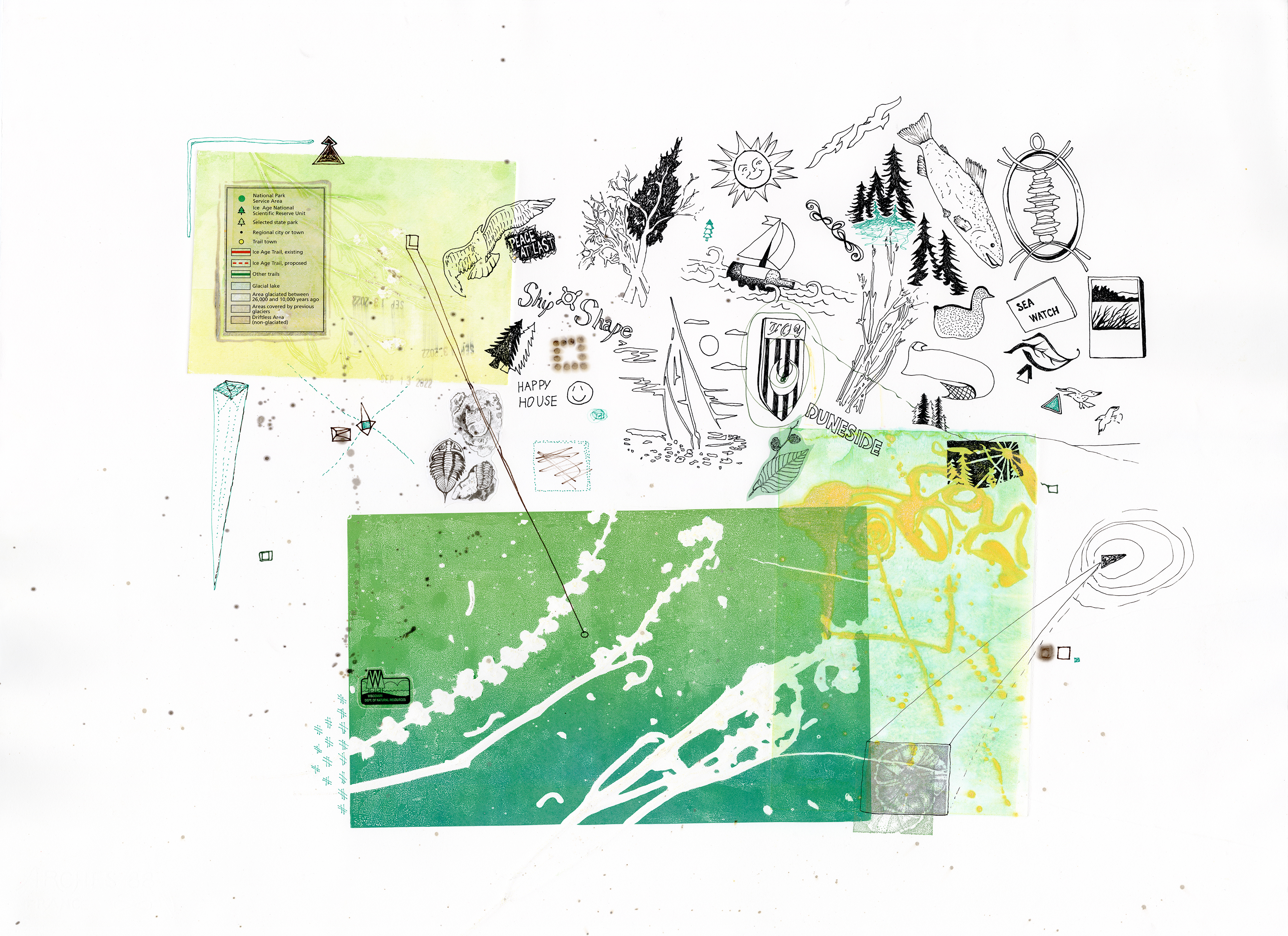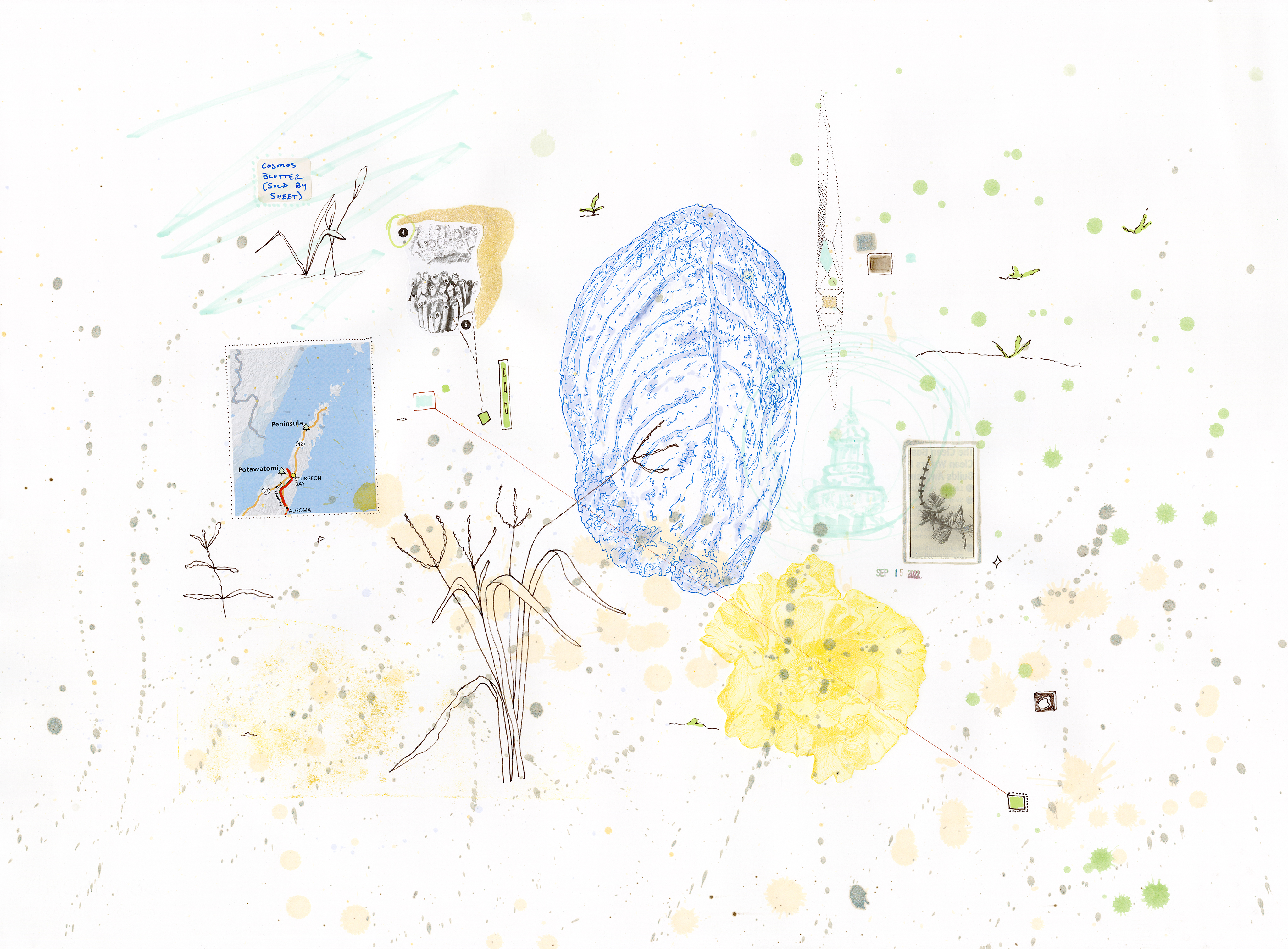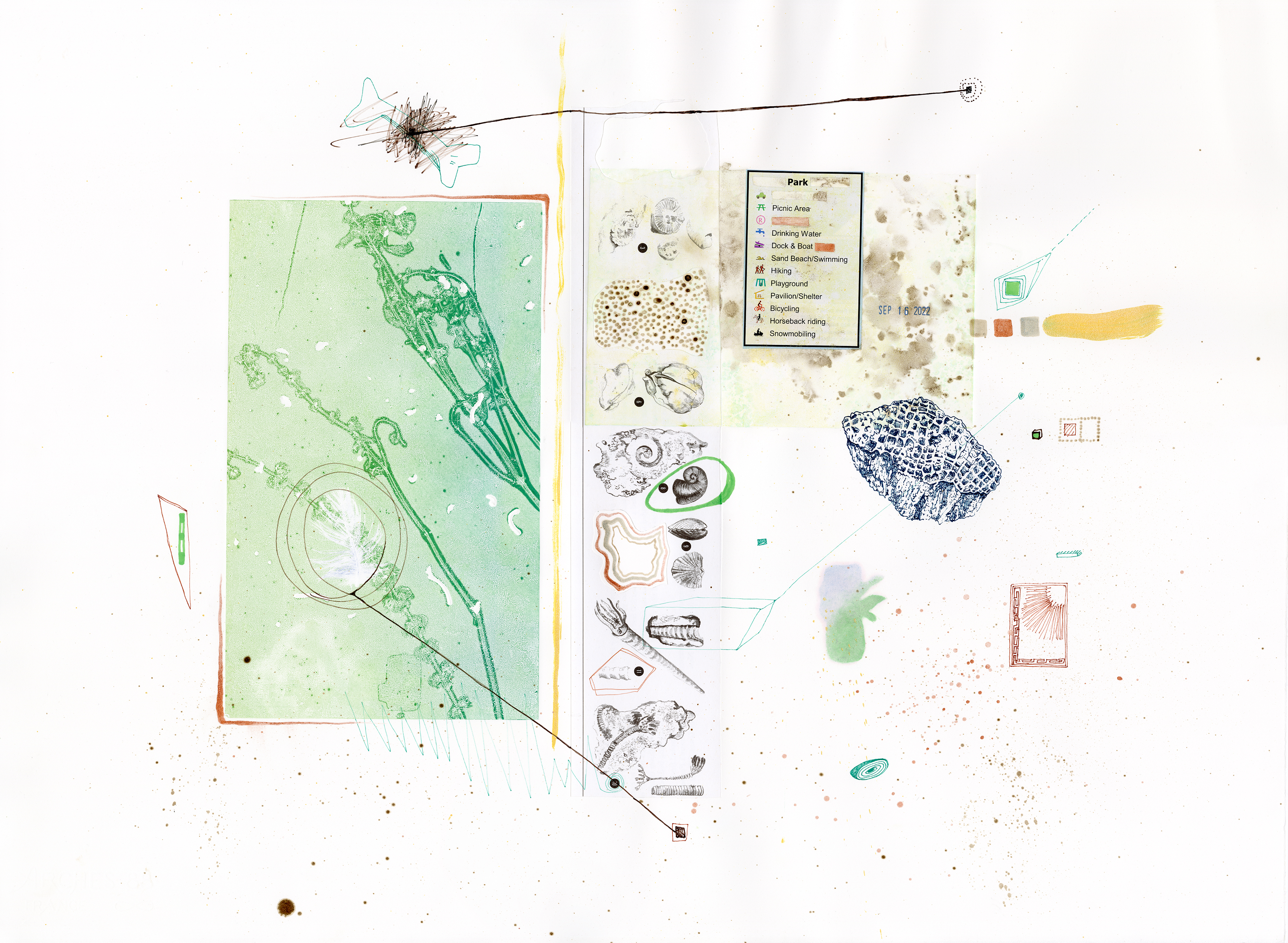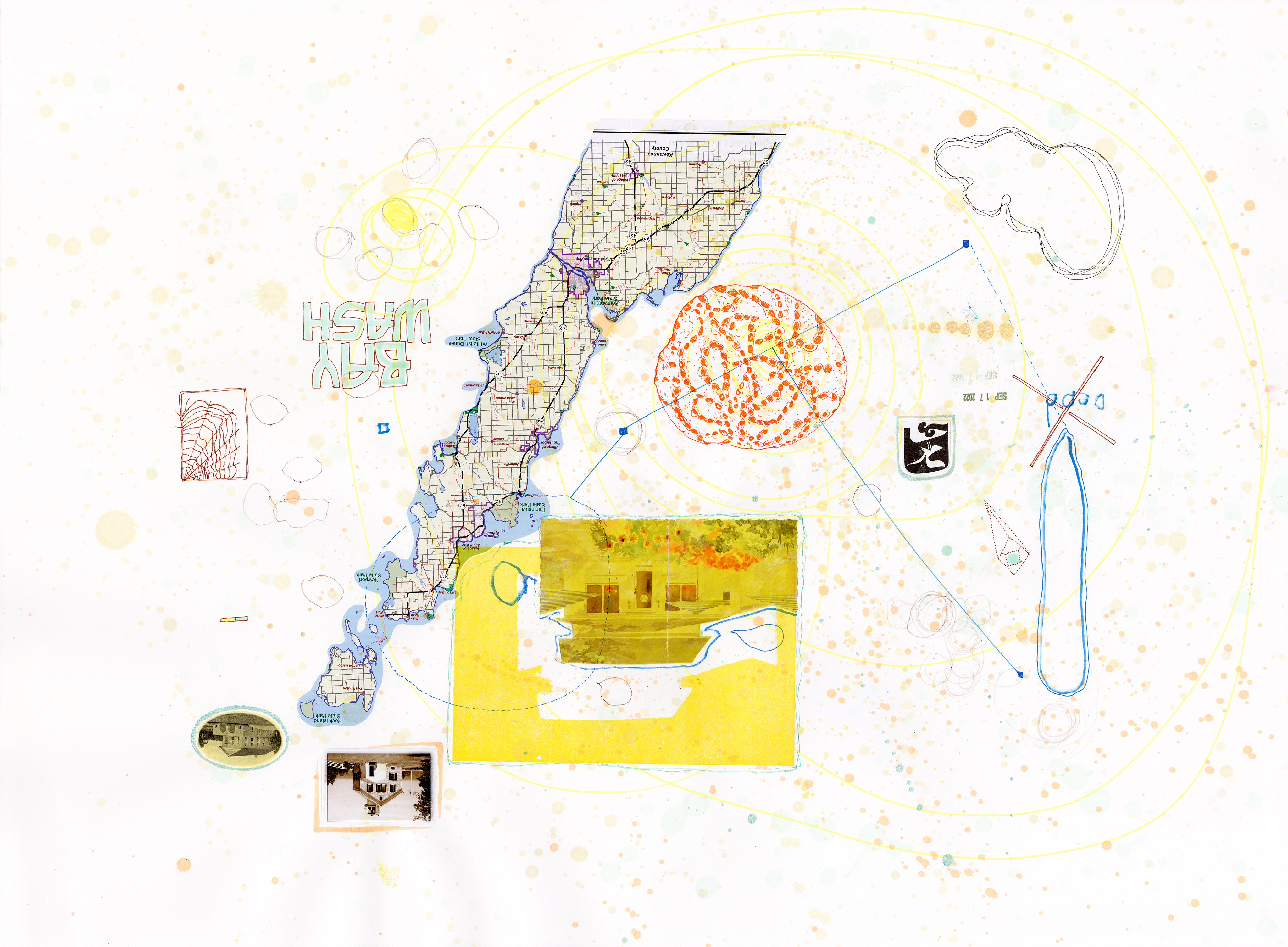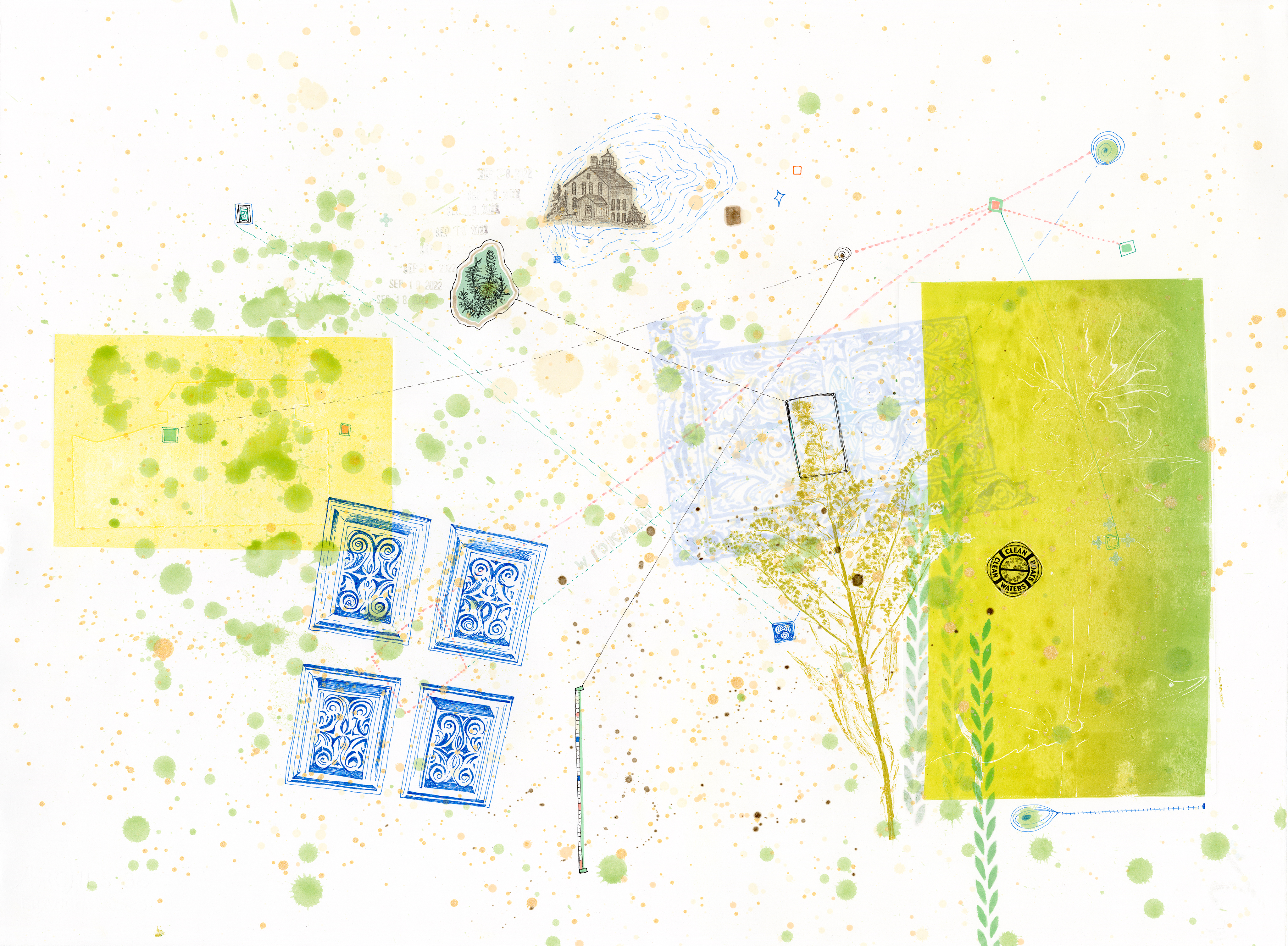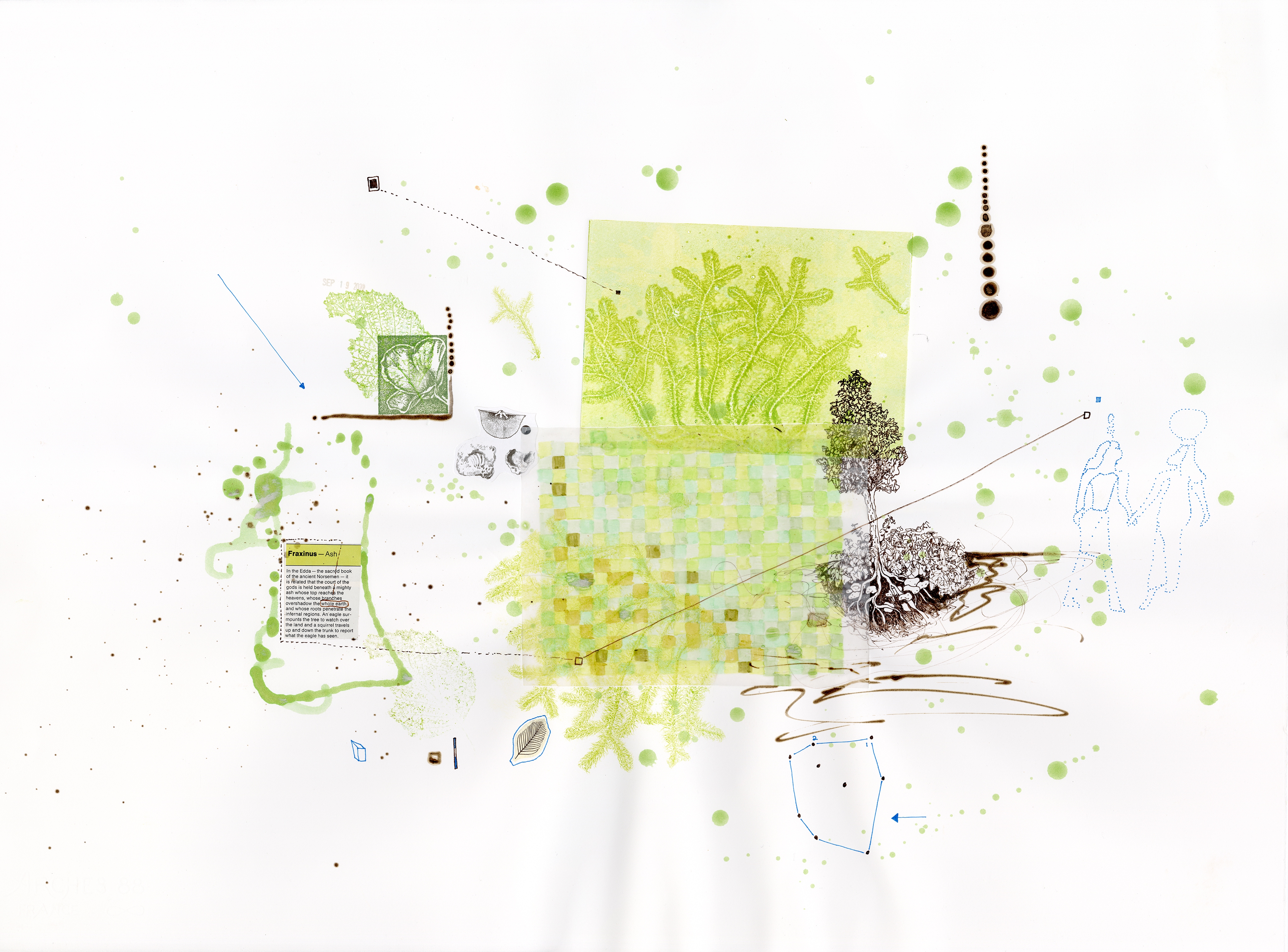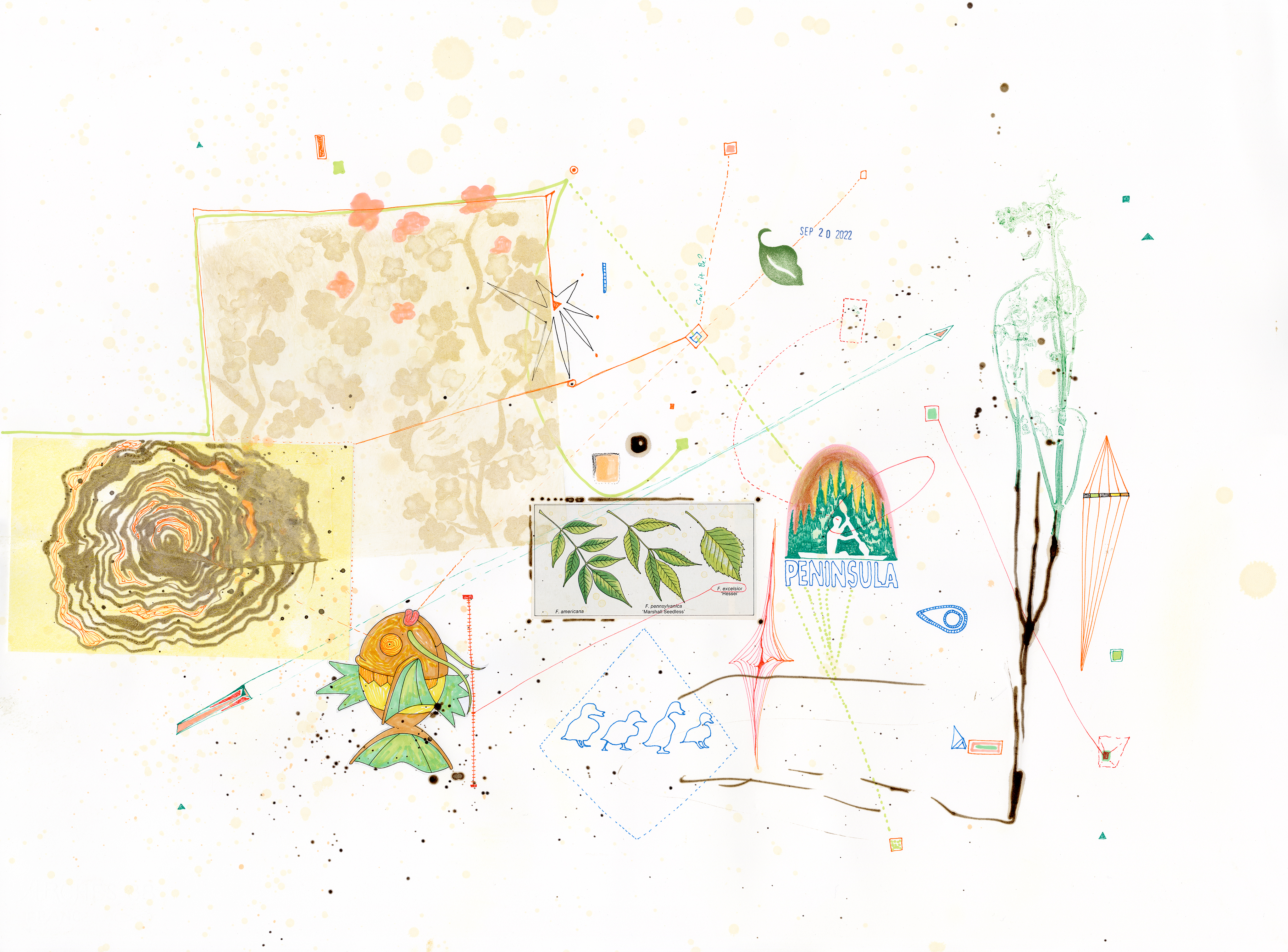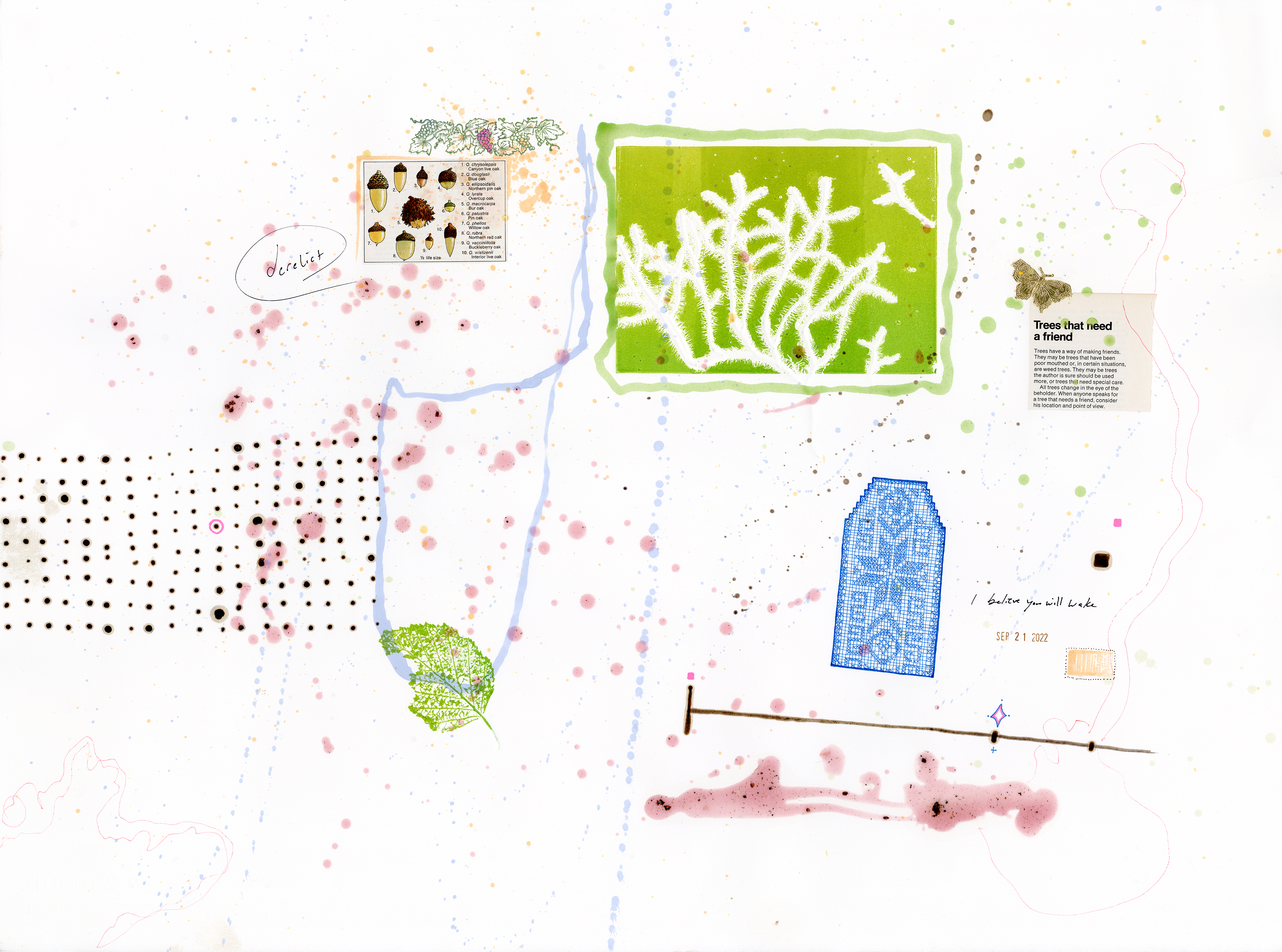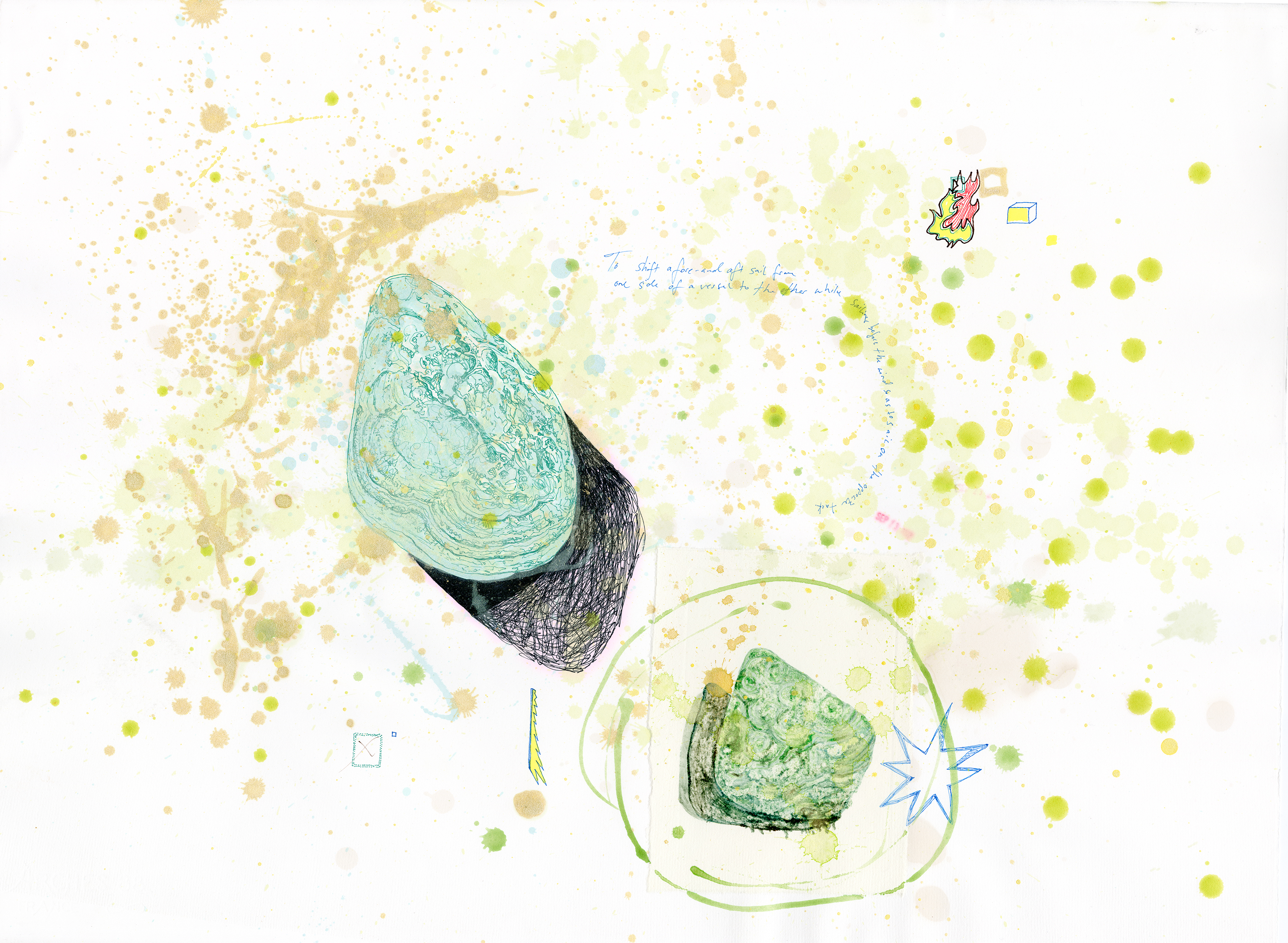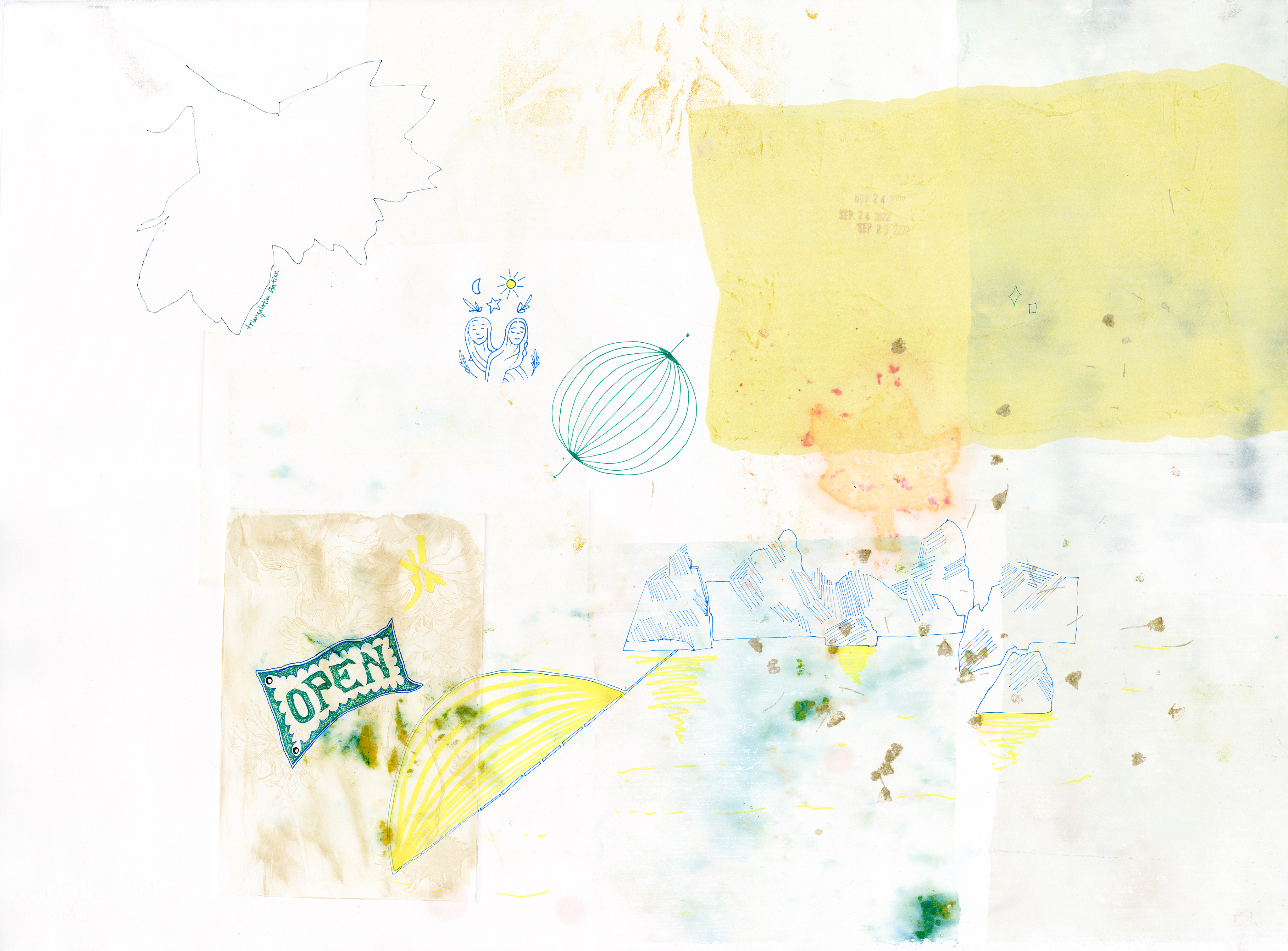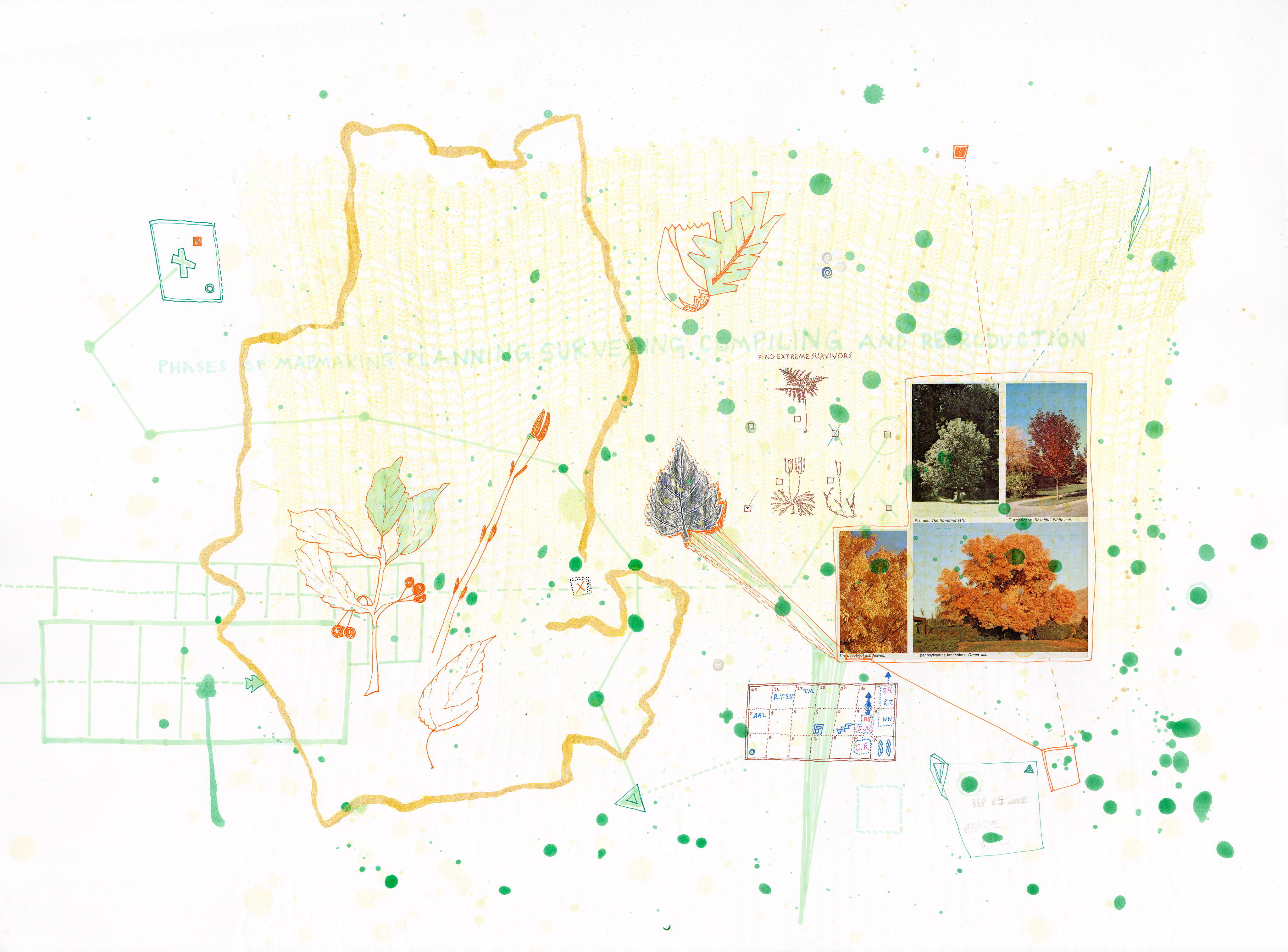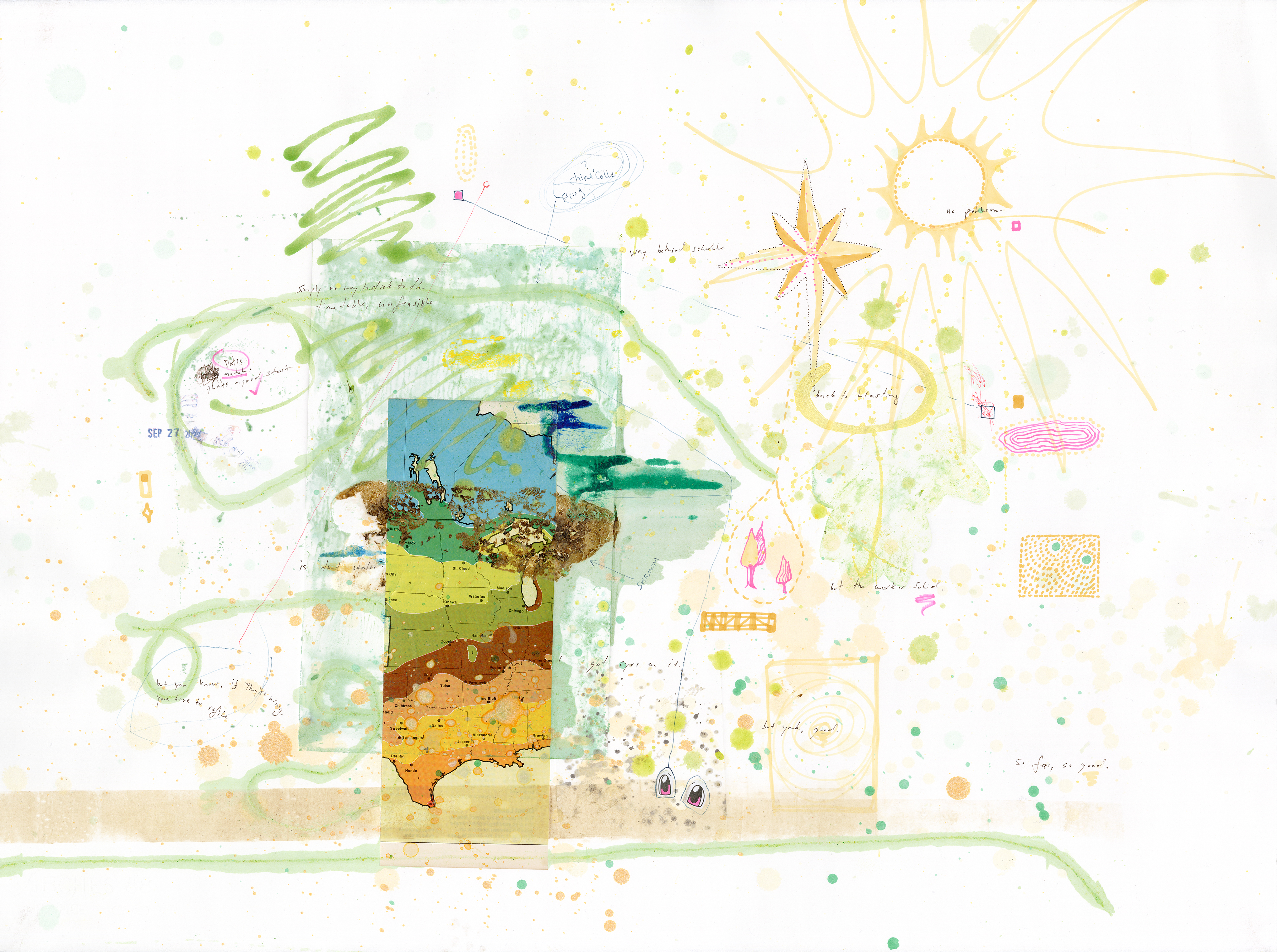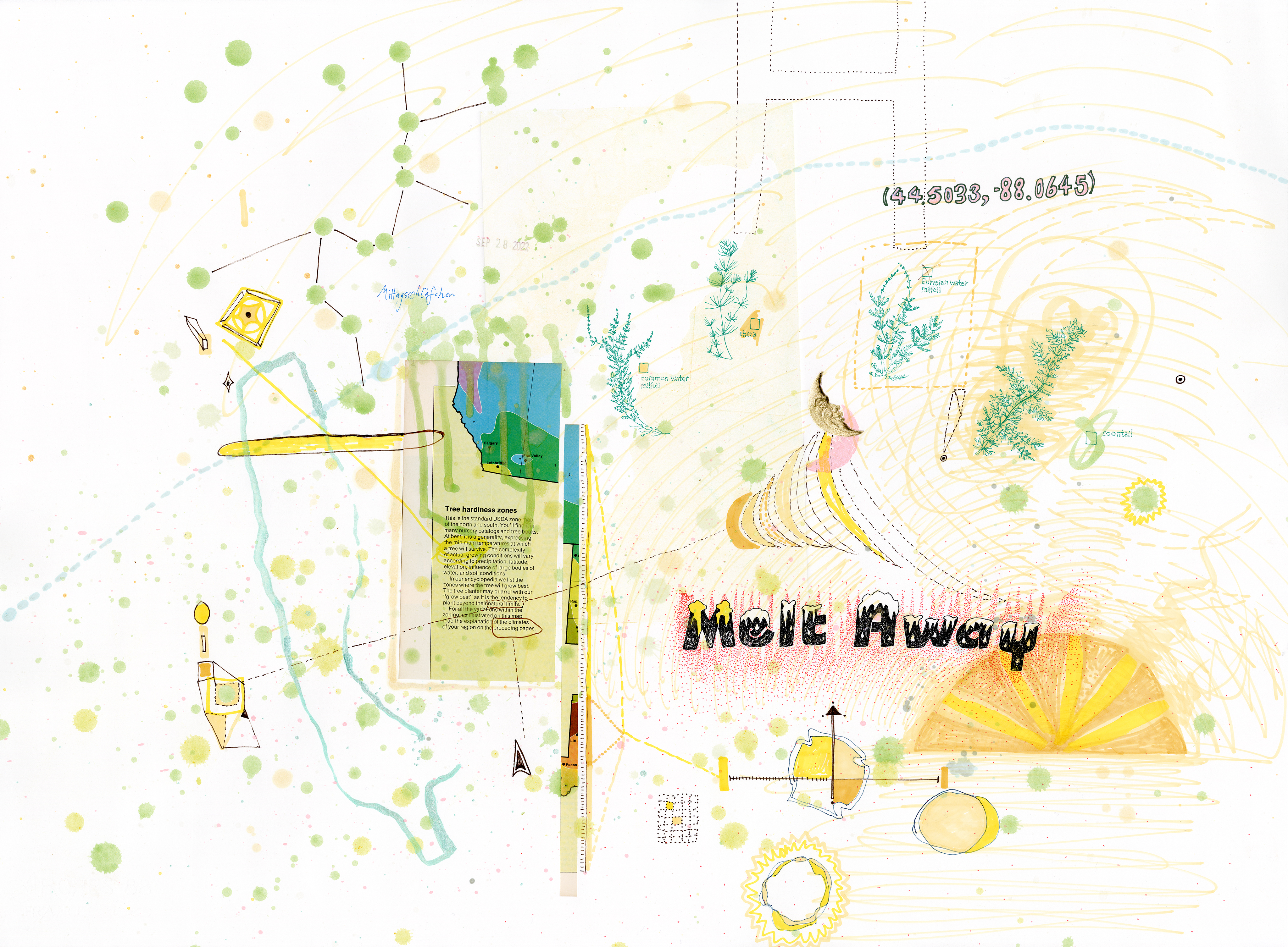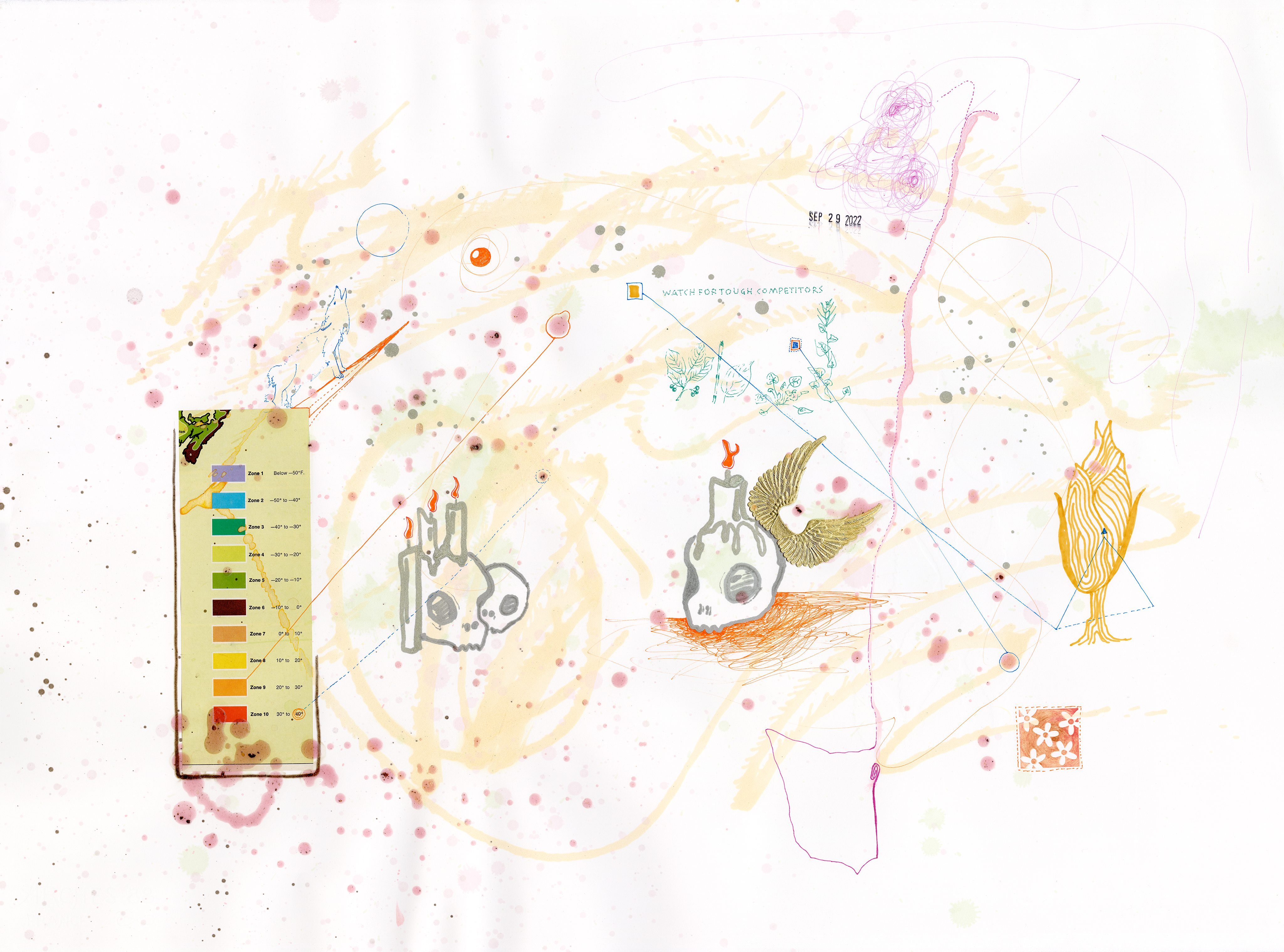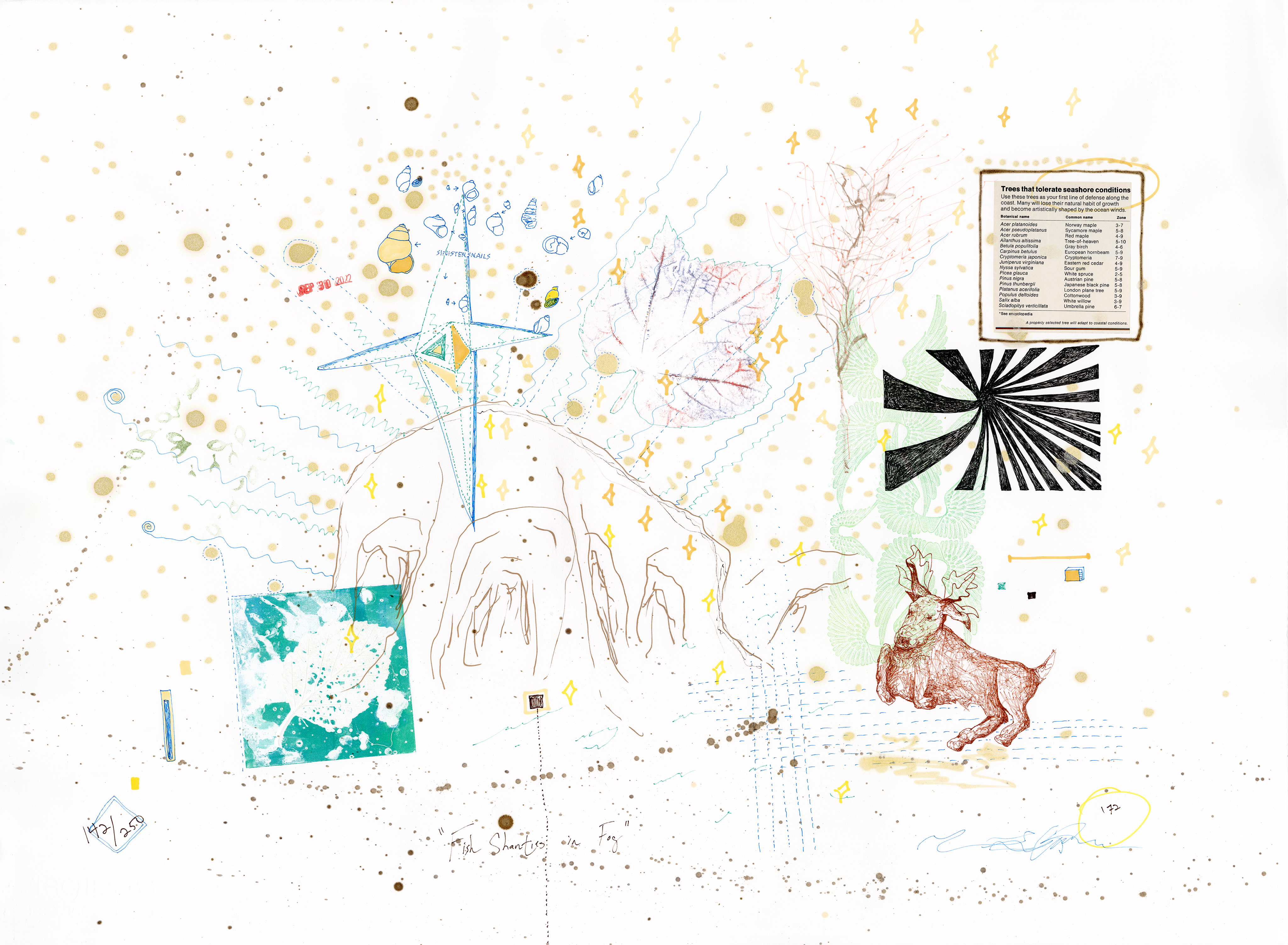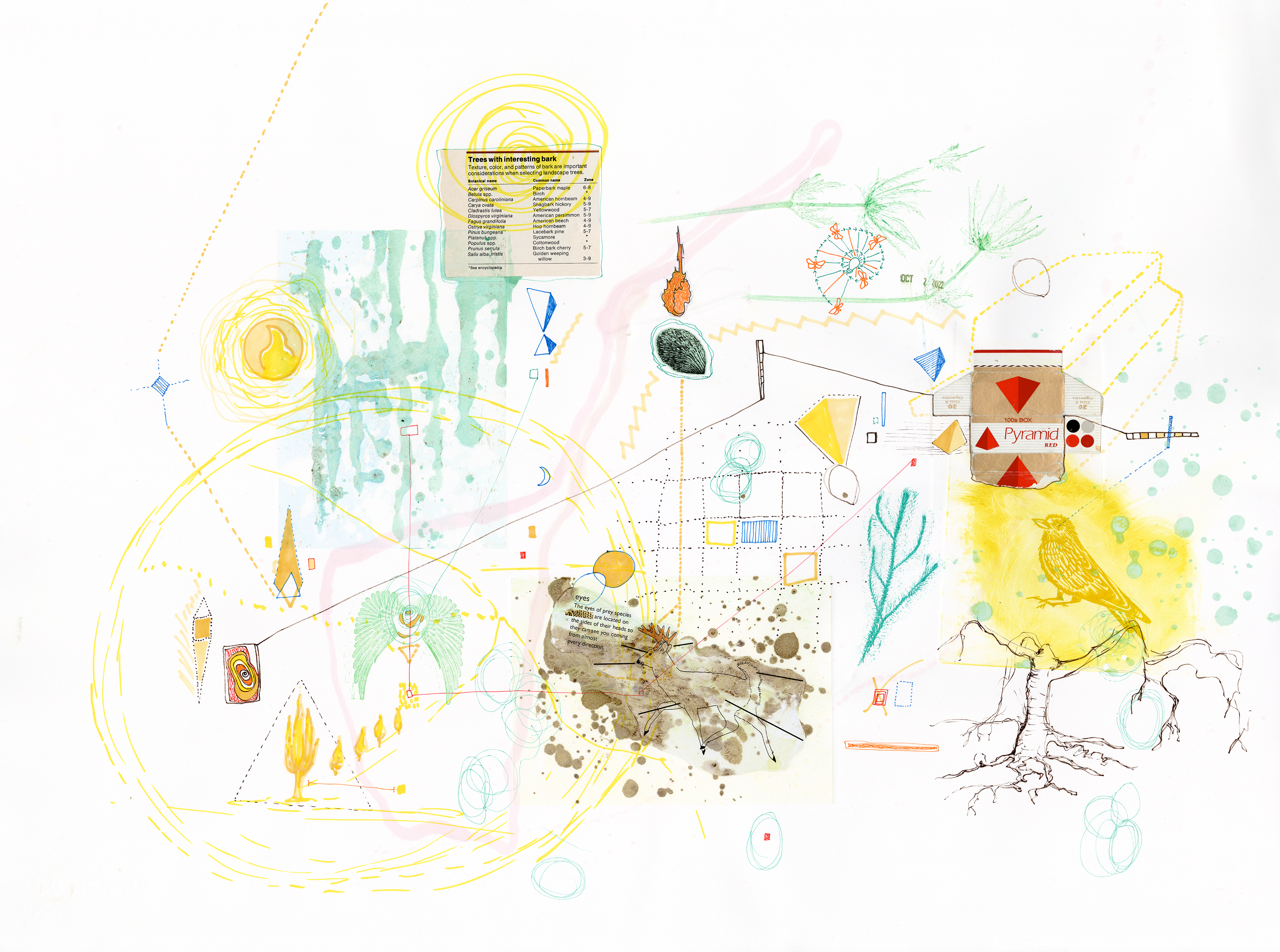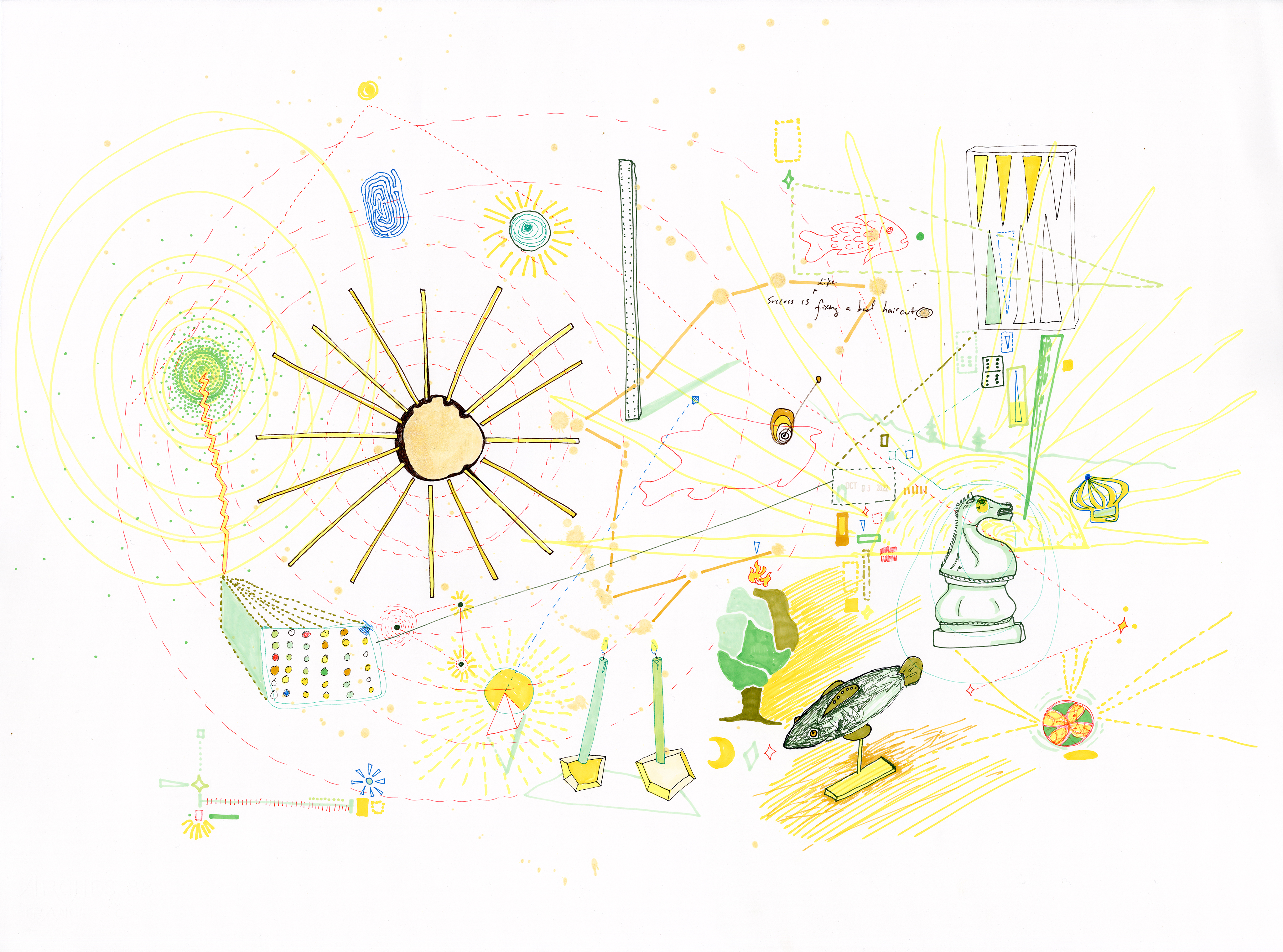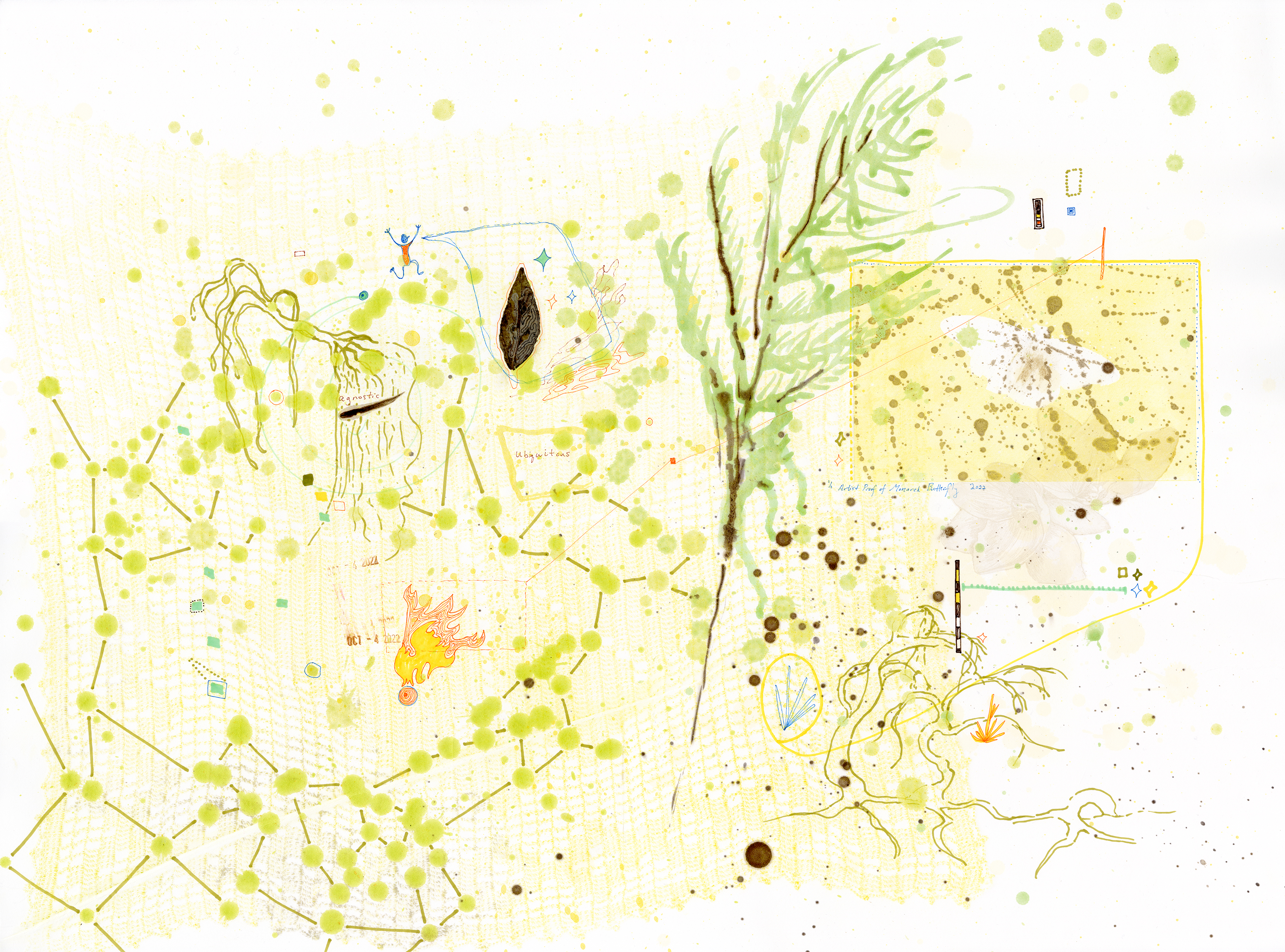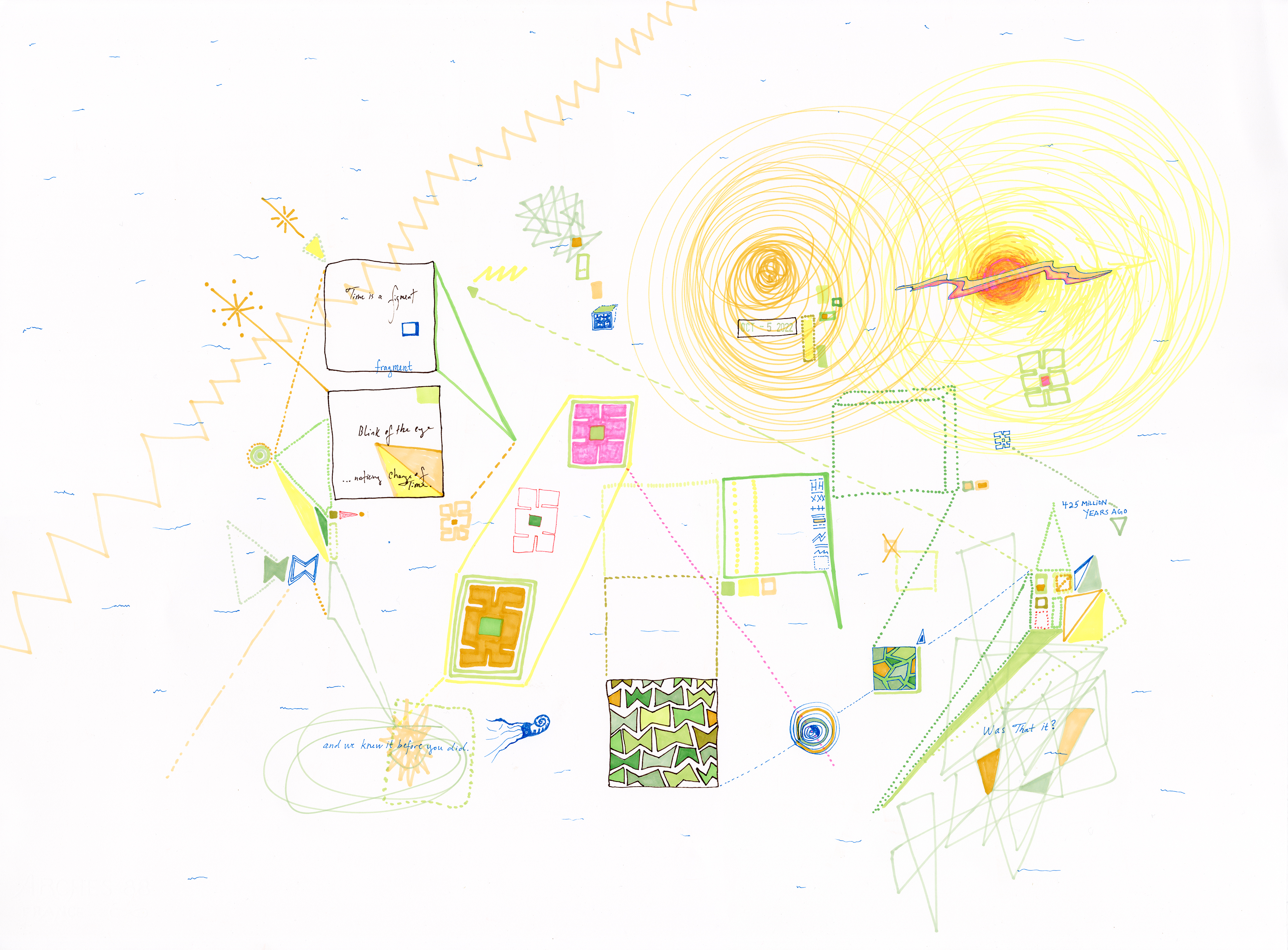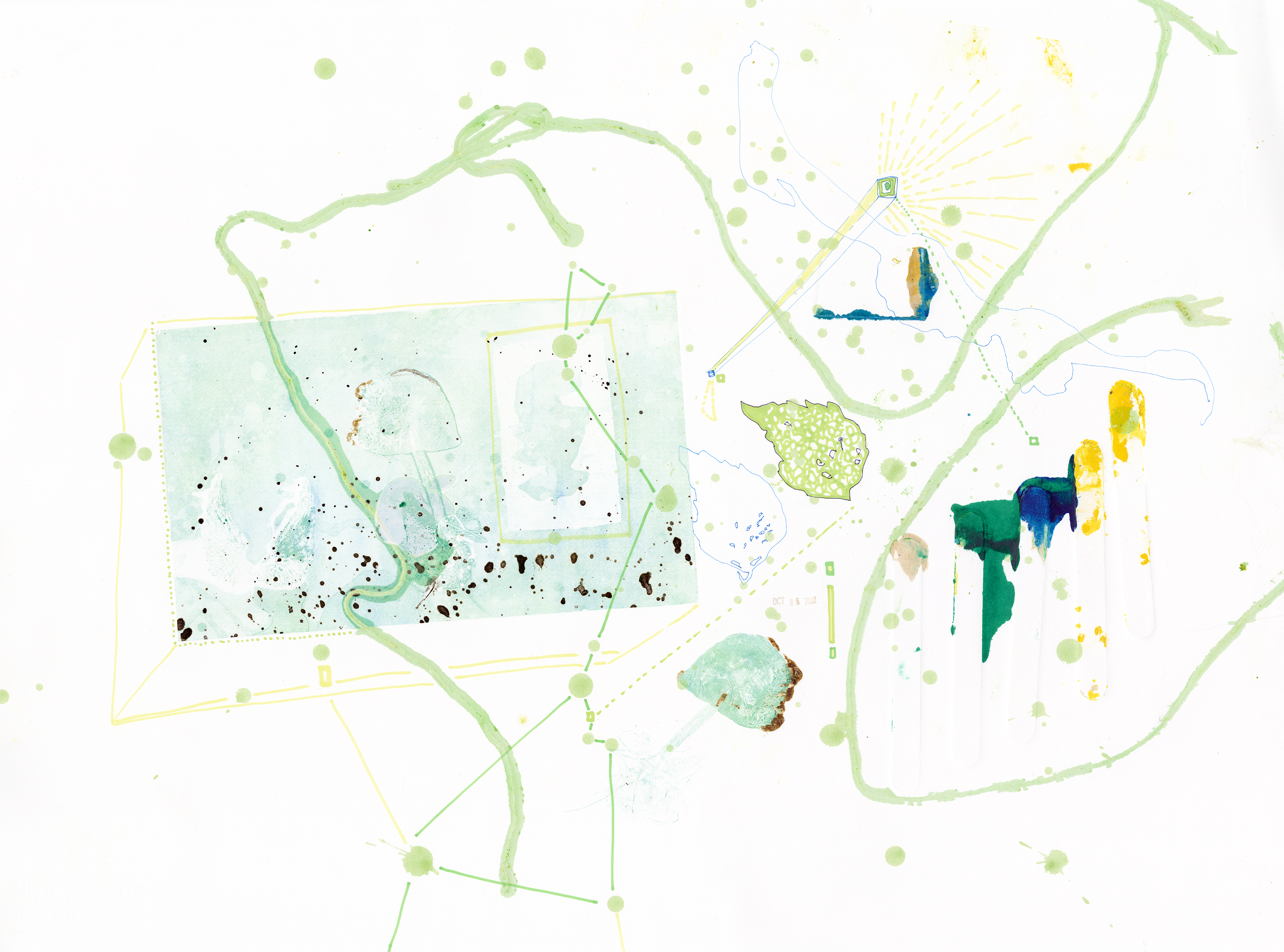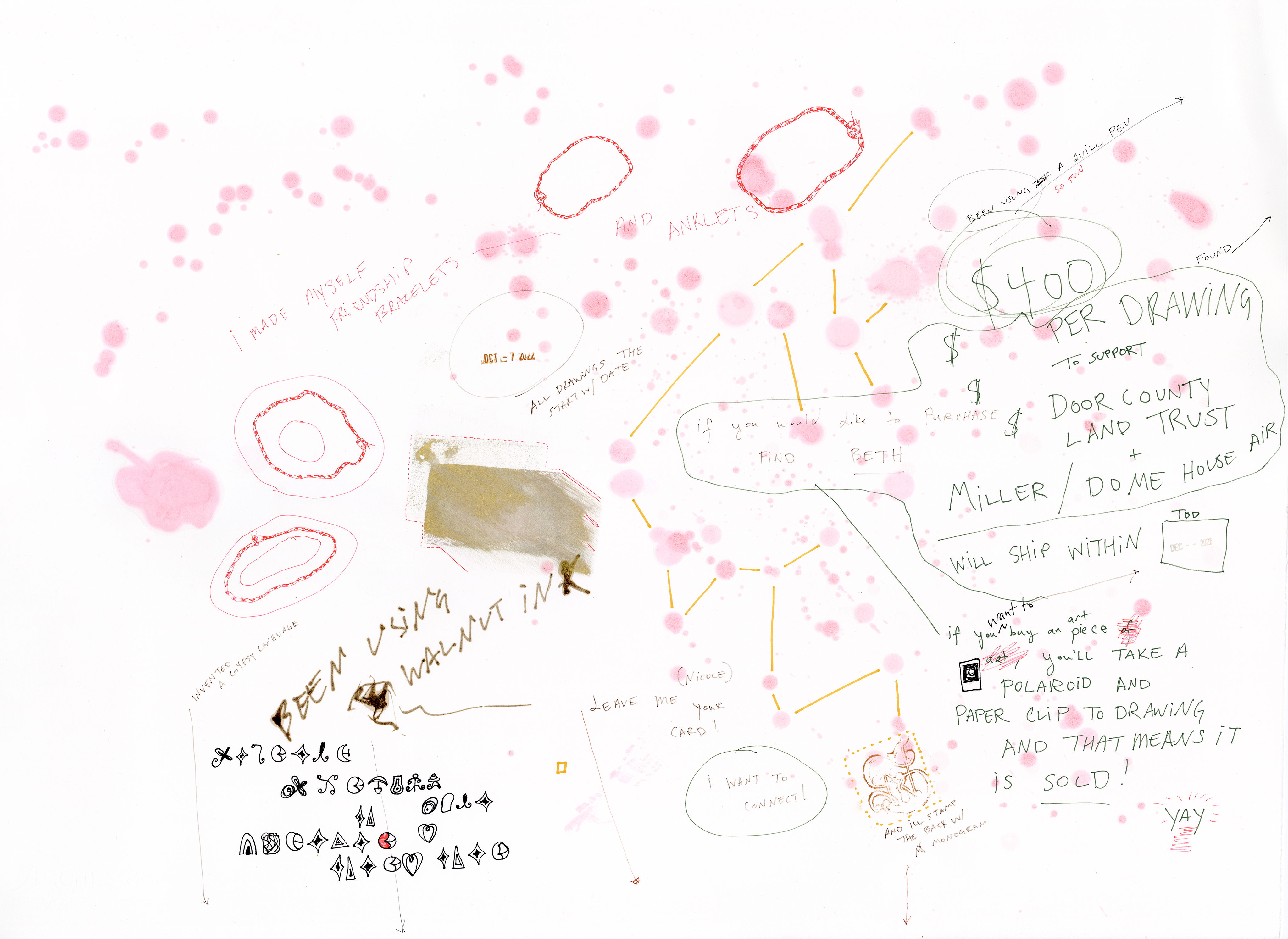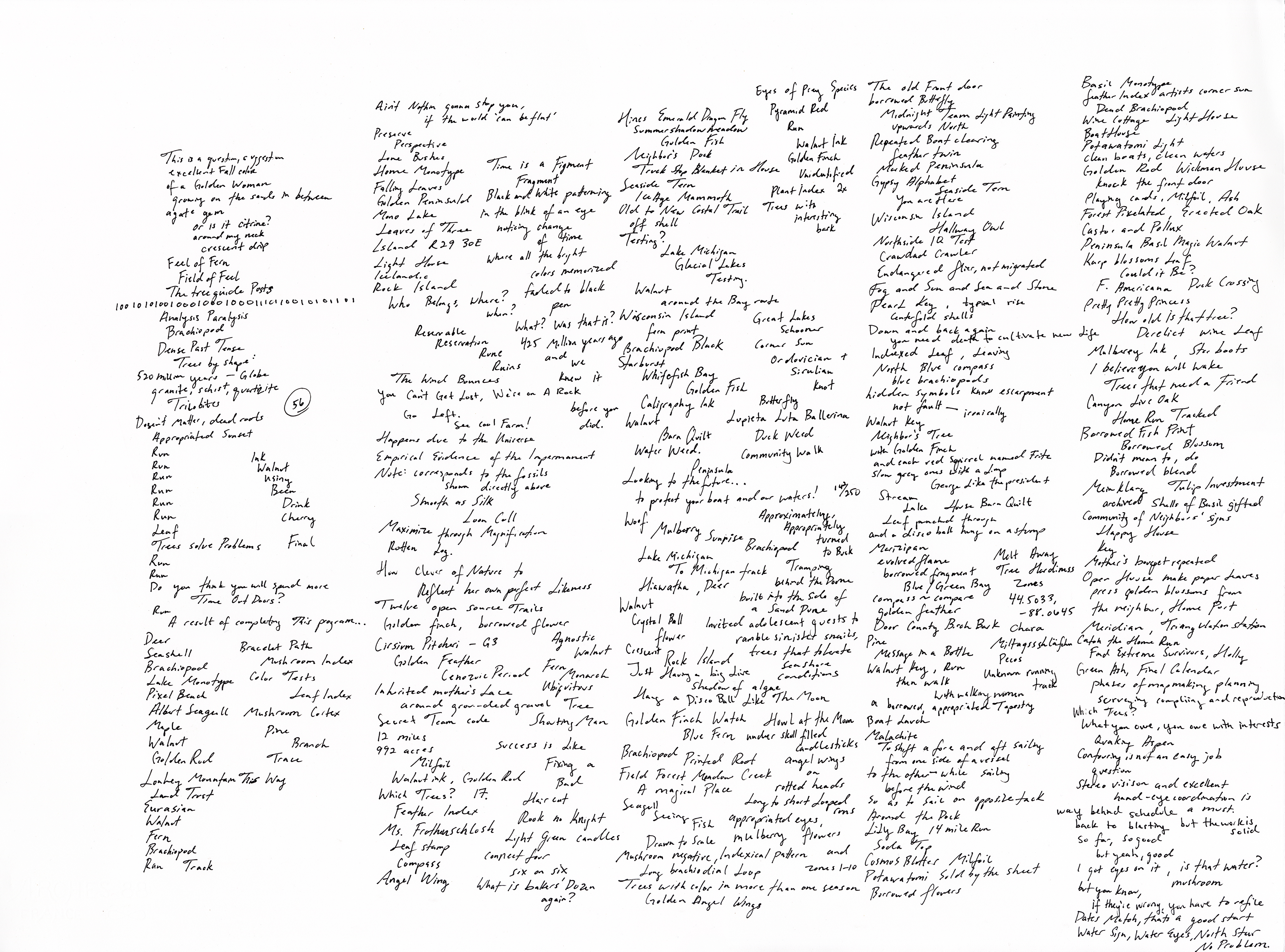Empirical Evidence of Escarpment




To search for Evidence of the Niagara Escarpment, I stayed with the Al & Mickey Quinlan Residency at the Dome House in Door County, WI. During the eight weeks there, I collected 35mm photographs from the surrounding property, Whitefish Dunes State Park, Cave Point County Park, Door County Land Trusts, the Nature Conservancy properties and gracious neighboring locals. As an exercised art practice, I spent the eight week residency running and creating daily drawings. Special thanks to the Quinlan family, the Miller Art Museum and Chicago Scanning for their efforts to help digitize the suite of large scale drawings.
Original drawings are available for purchase! (see below)
and/or
BUY the
Downloadable PDF - containing High Resolution of all 56 Drawings!
and/or
BUY the
Downloadable PDF - containing High Resolution of all 56 Drawings!
In 1978, Door County resident, Albert Quinlan built the Dome House, a self-regulatory home—entirely of chicken wire, rebar, and Ferro cement - one that would require minimal cooling and heating, maintaining an even 55 degree temperature from the earth surrounding it.
The home features two domes, one as living quarters and one that served as a studio. The open concept, dunescape home includes an indoor botanical area, all meant to enhance the outdoors - in.
The home features two domes, one as living quarters and one that served as a studio. The open concept, dunescape home includes an indoor botanical area, all meant to enhance the outdoors - in.
With an epicenter at the Dome House, I often ran on the Brachiopod Trail, which gets its name from the two-shelled marine animal found in the Silurian Sea, once covering Door County about 425 million years ago. I trekked along a rock wall embedded with fossils, clear evidence of the ancient ocean floor, now peninsula, beneath my shoes.
Accompanied by the gentle rumble of Lake Michigan’s waves, I departed my trail eastward along the shoreline, shaded by white cedars that can attach themselves easily to rocks, making them one of the more common trees. The trail winds on a rock shelf overlooking the lake, where it would have been common for Native Americans to spearfish sturgeon.

Inland, the trail is lined with thimbleberry and elderberry bushes, and the flowering plant yarrow, that has been used medicinally for staunching blood flow. The shallow soil layers of the Door Peninsula are due in part to glacial trauma, scraping the land multiple times over the last millennia, resulted in shrubby and relatively open landscape.
Colorshifting Sugar Maples were plentiful to note time, along with American Beech trees, whose spiny nuts open after it drops from the tree.
The rocky soil makes it difficult for trees to put down root systems; trees grow until their roots cannot support them and high winds blow them down. “Tip-ups,” or uprooted trees whose root system is exposed, often contain large rocks embedded in the root system.
The rocky soil makes it difficult for trees to put down root systems; trees grow until their roots cannot support them and high winds blow them down. “Tip-ups,” or uprooted trees whose root system is exposed, often contain large rocks embedded in the root system.




















































I trained myself to spot the rare baneberry plant, whose distinctive white berries earned it the name “doll’s-eyes” for their uncanny similarity to an antique doll’s porcelain eyes, highly poisonous - can cause cardiac arrest. I also learned to notice shifts in edible Mycelium over time, edges where Rattlesnake Ferns would catch more light, and herbaceous Trillium on the forest floor.
I routed back to the Dome House on a significant ridge of rocks caused by glacial melt-off rising and falling in erratic succession. The accompanying dunes speak to the awesome power of time and energy at work upon the shoreline. I too traced the land, acting as a force.
I routed back to the Dome House on a significant ridge of rocks caused by glacial melt-off rising and falling in erratic succession. The accompanying dunes speak to the awesome power of time and energy at work upon the shoreline. I too traced the land, acting as a force.
Back at the residency, I would stretch on the mossy top of the Dome, observe blue jay gangs, hear thrashing bucks, identify exotic mushrooms and remain open to shifting perspectives. I recorded my observations on daily drawings - pasting in collected maps, repeating symbols, running specimins through the printing press and defining the ephemeral neighborhood lexicon.
Click to BUY an orginial Dome House drawing
and/or
BUY the Downloadable PDF - containing High Resolution of all 56 Drawings!
and/or
BUY the Downloadable PDF - containing High Resolution of all 56 Drawings!







